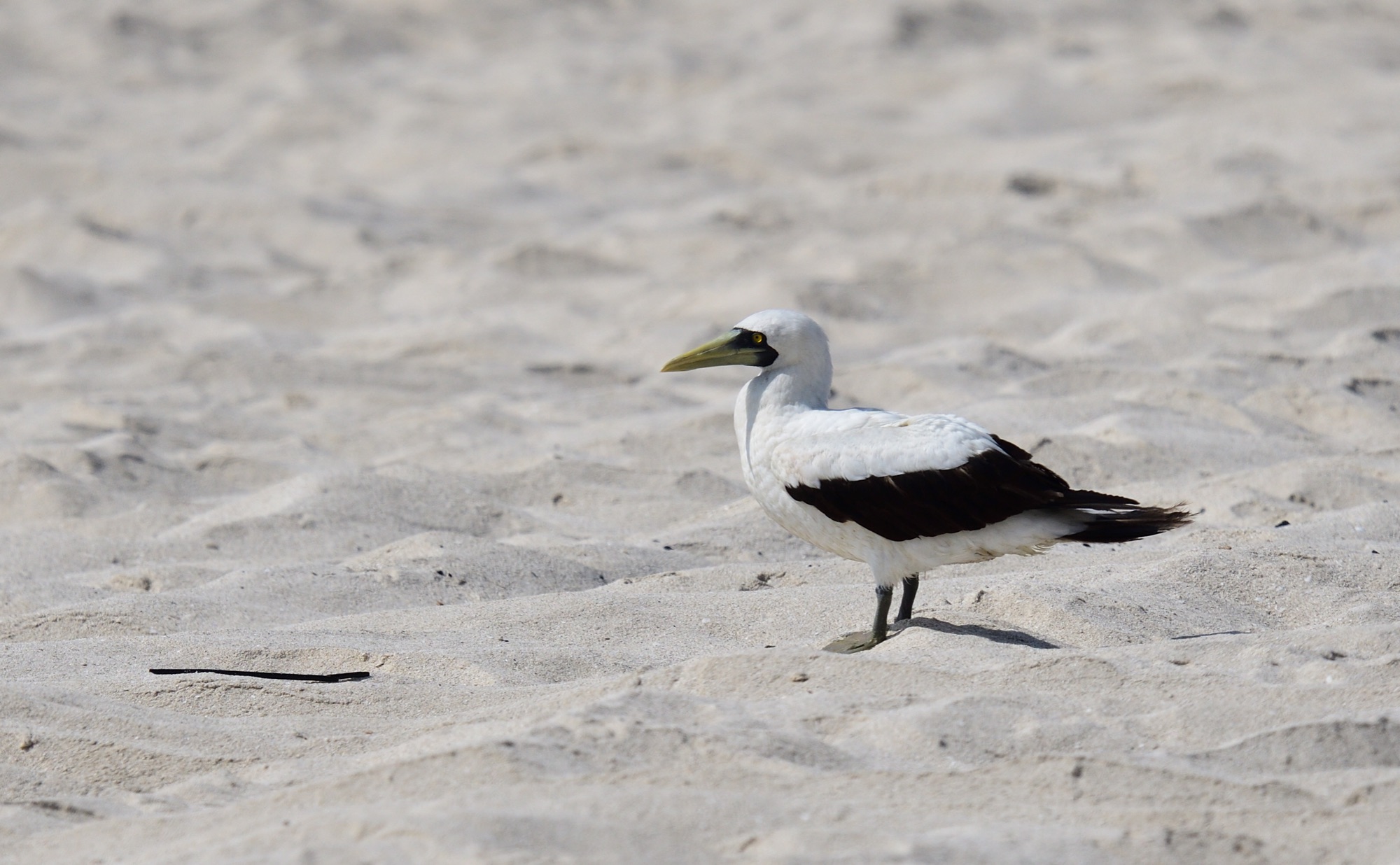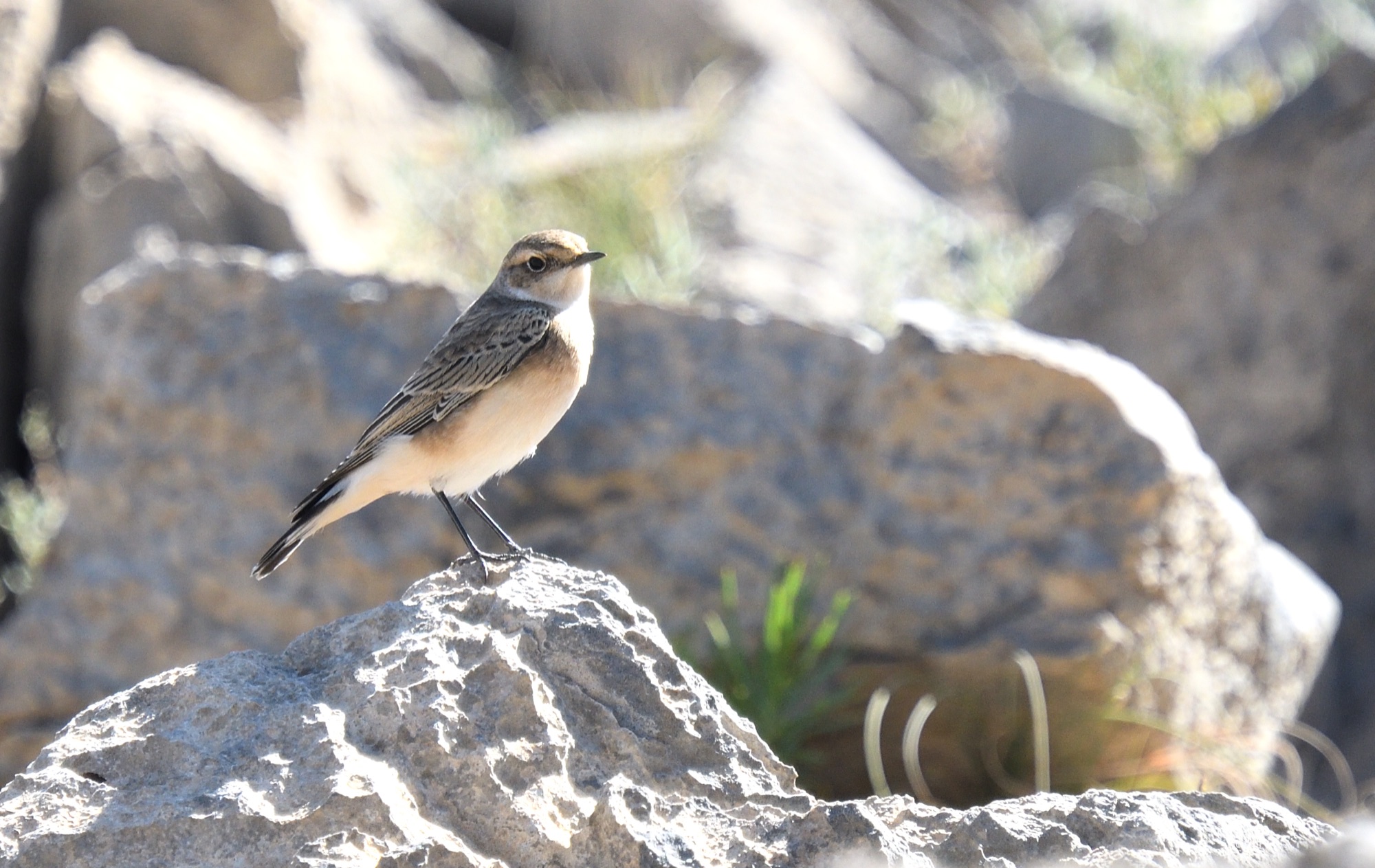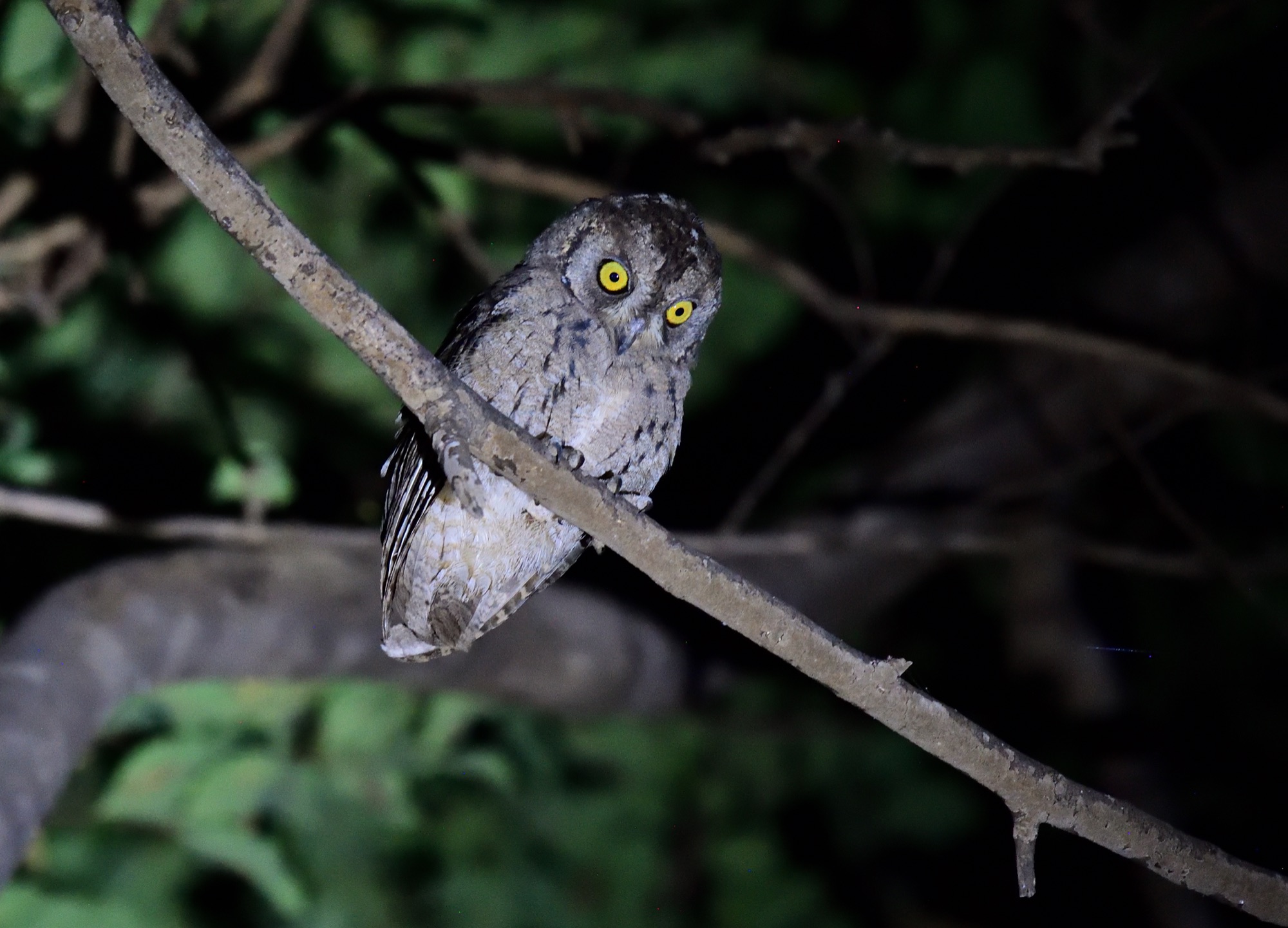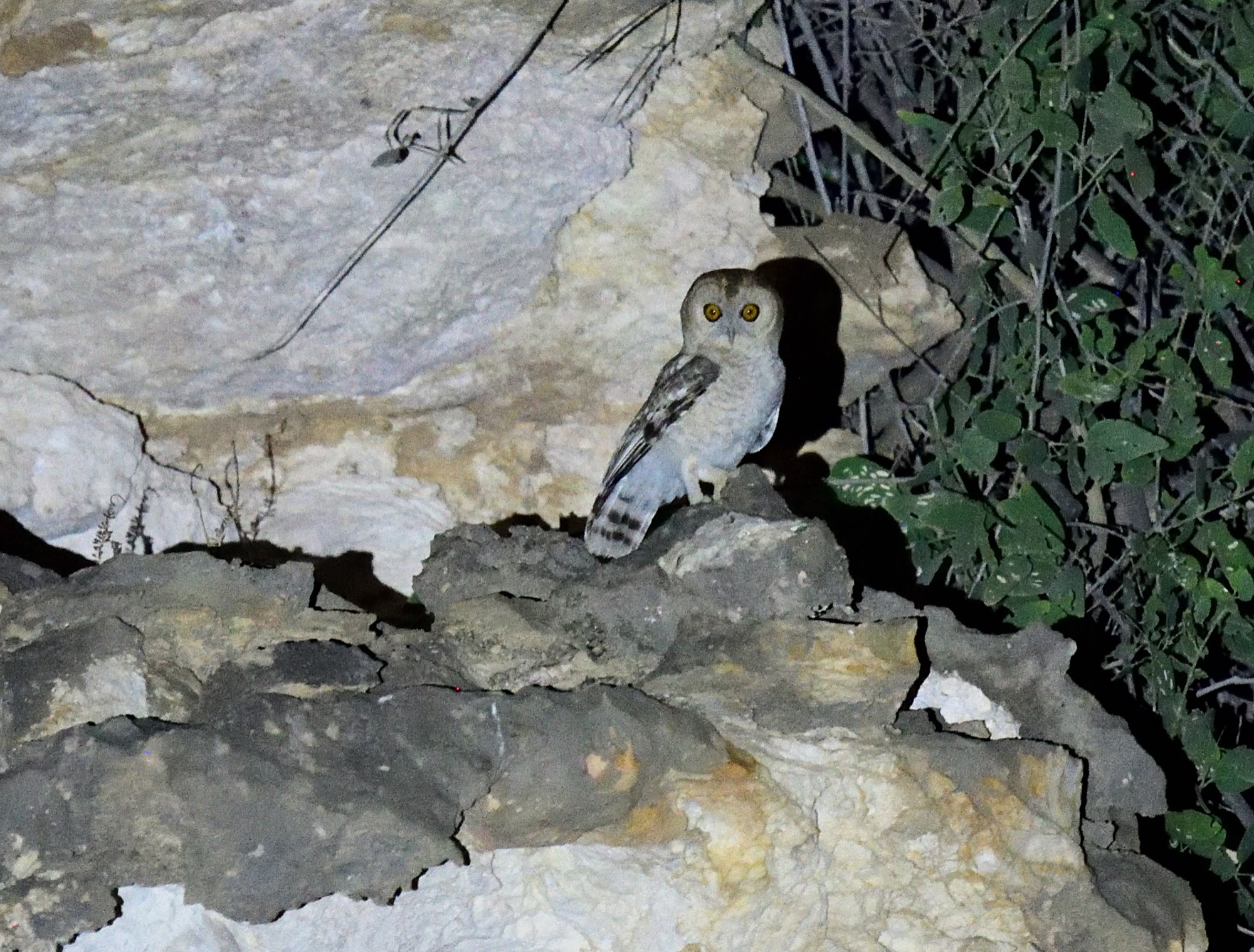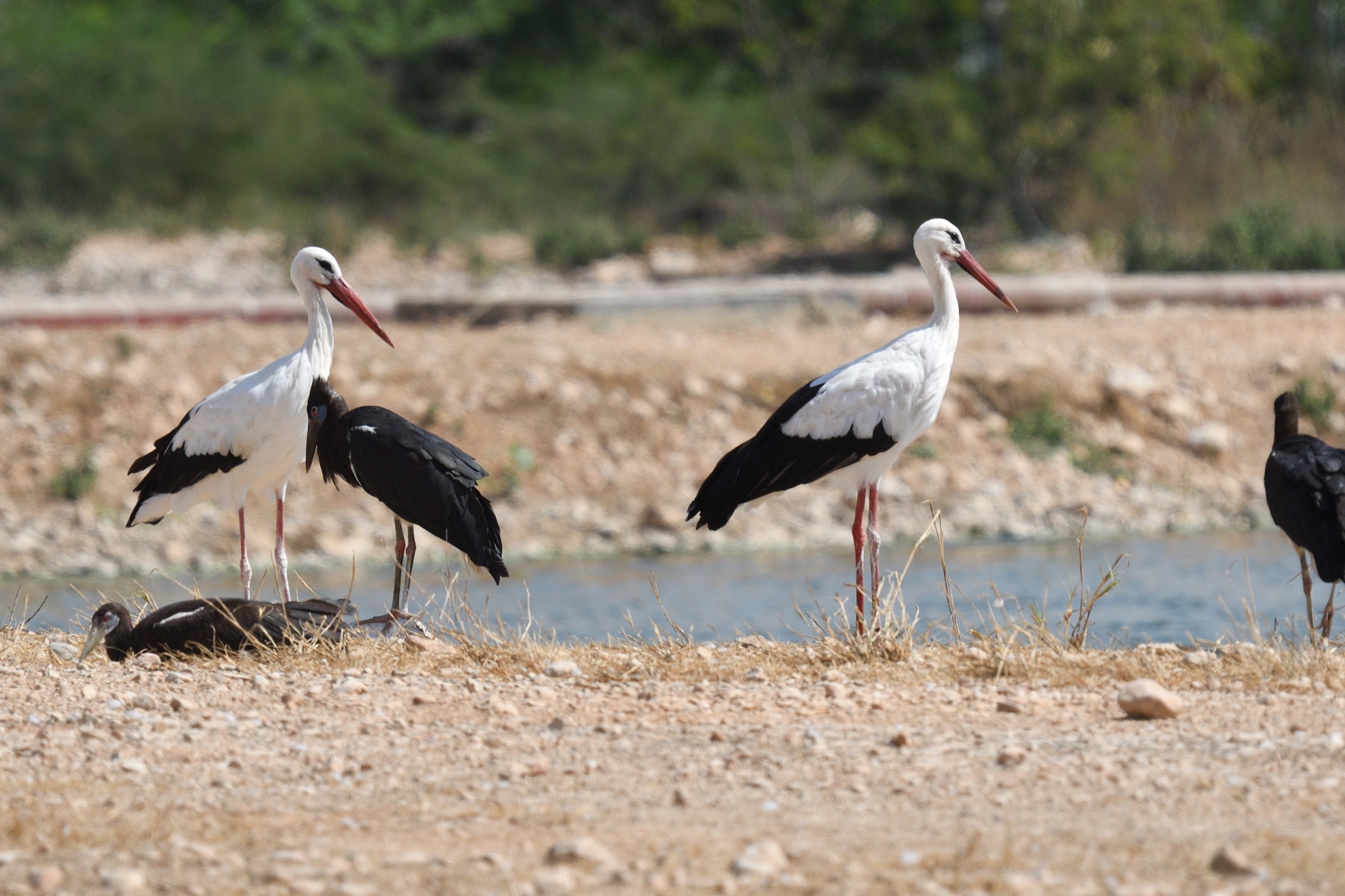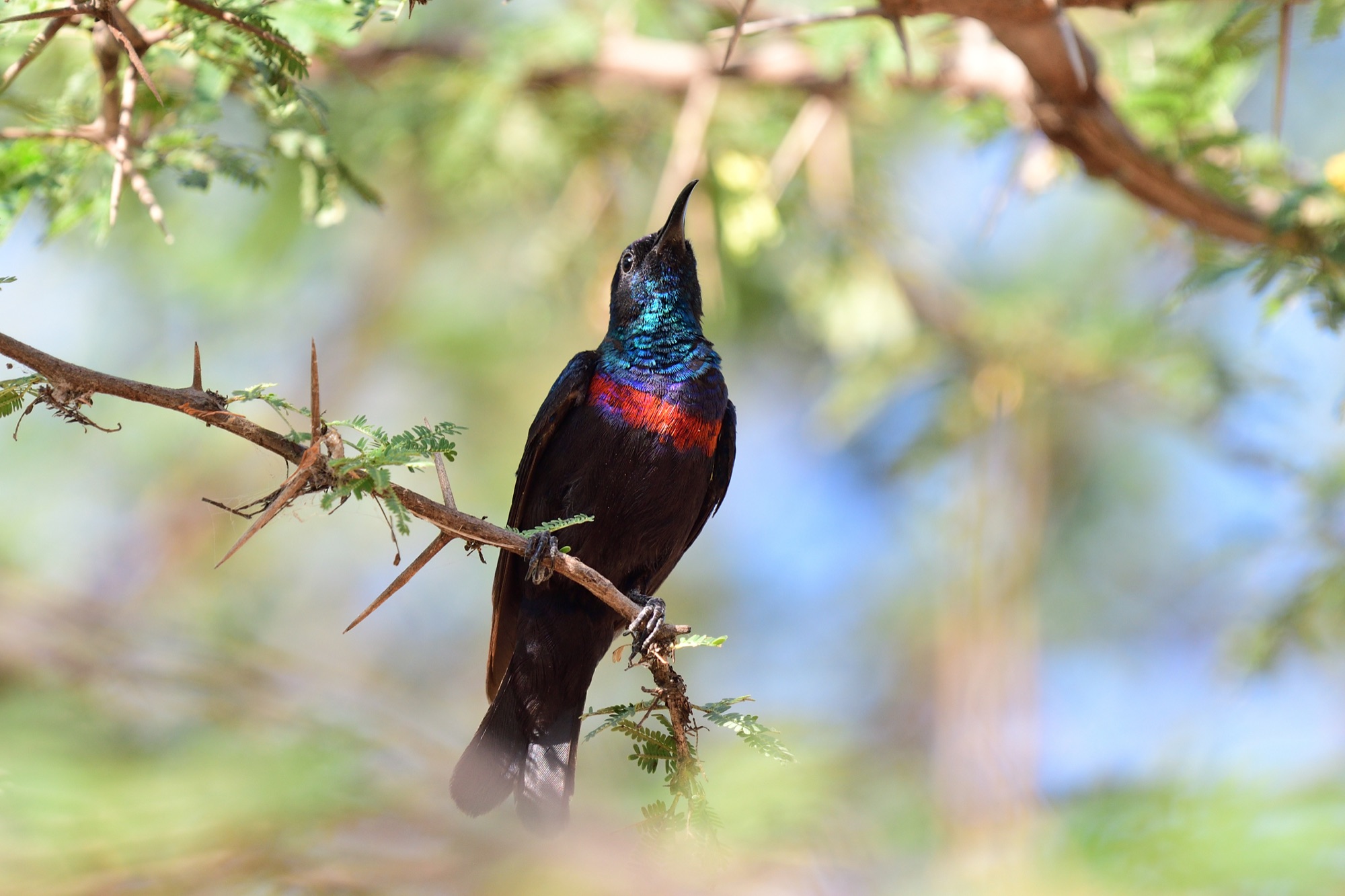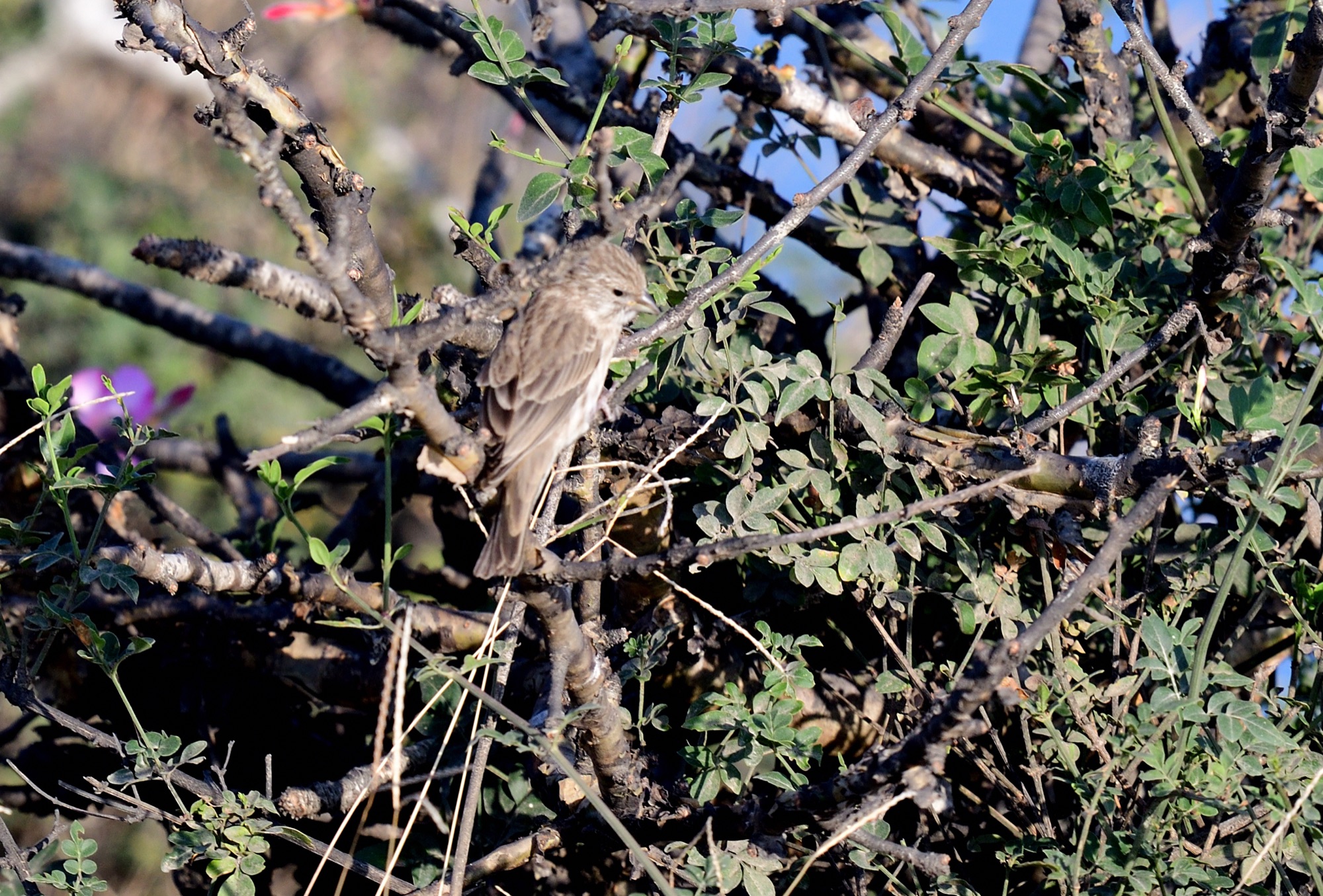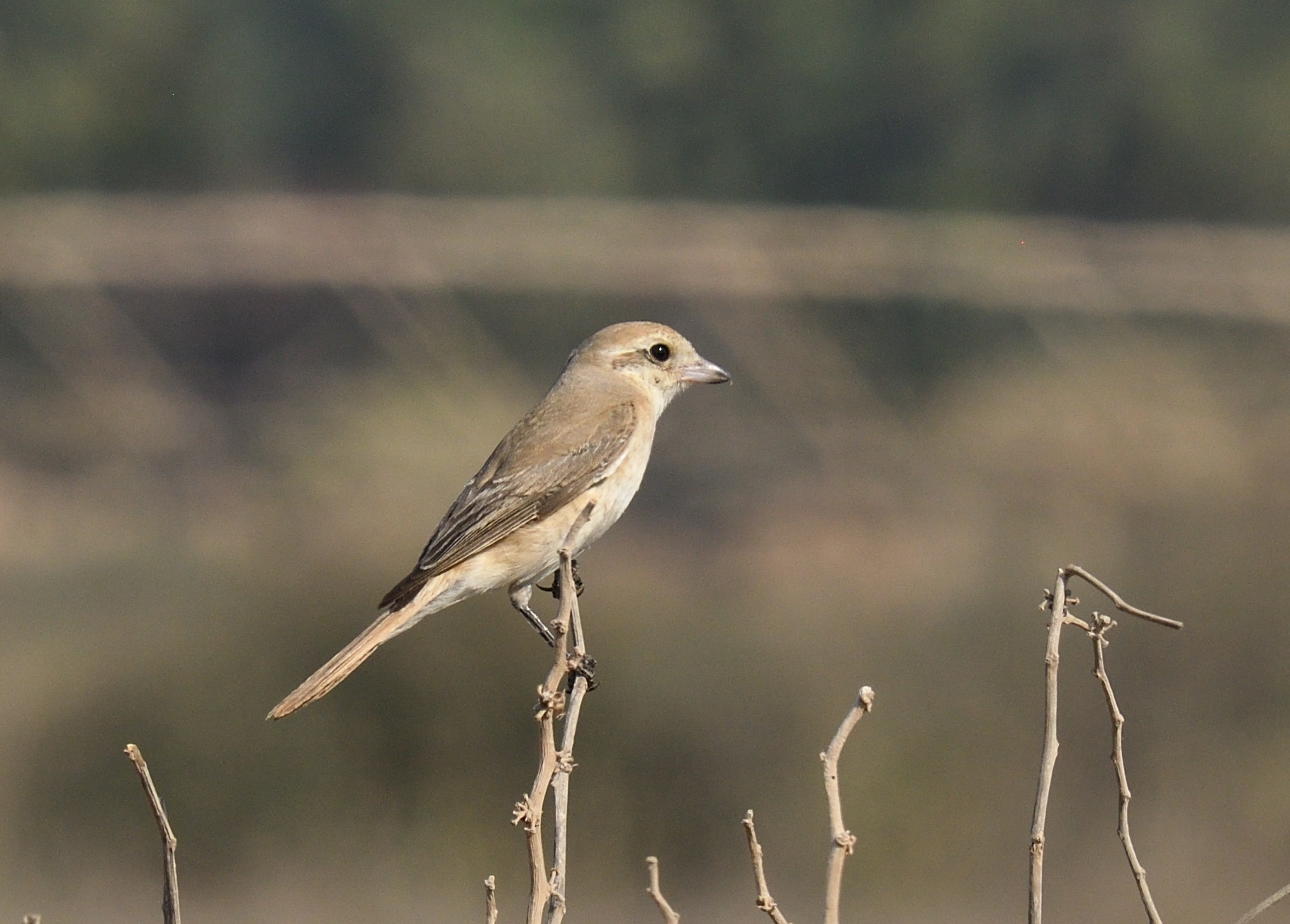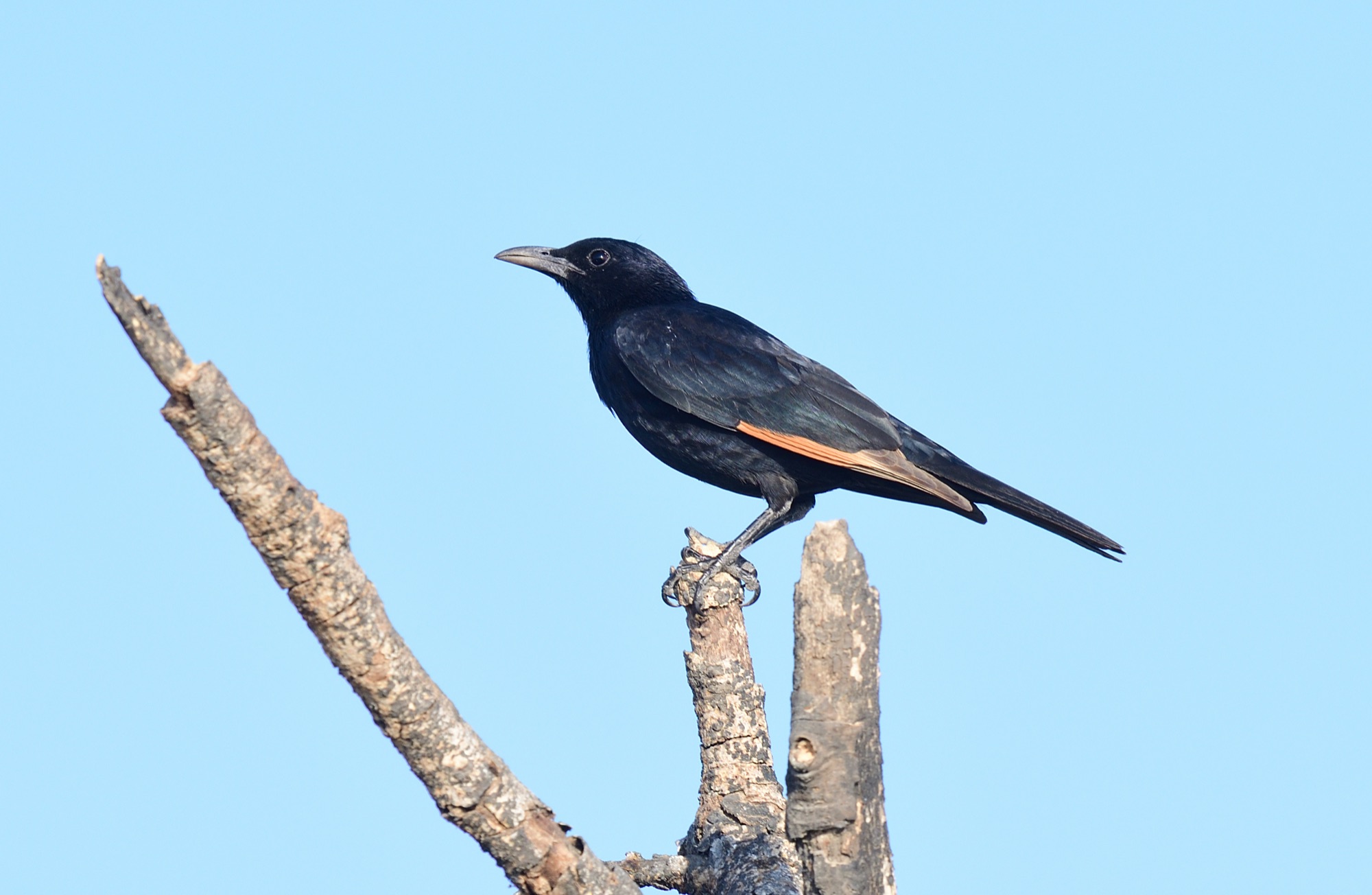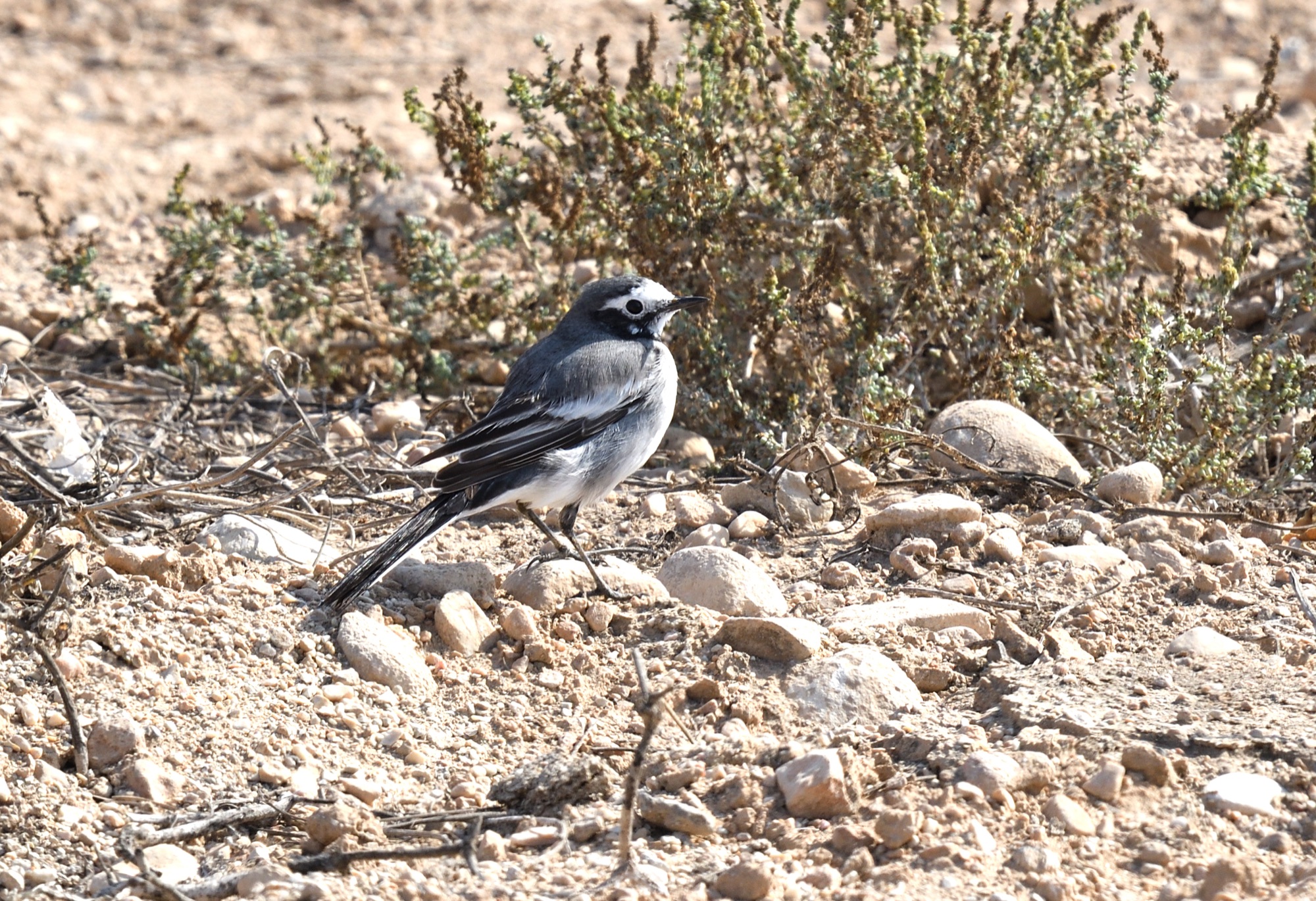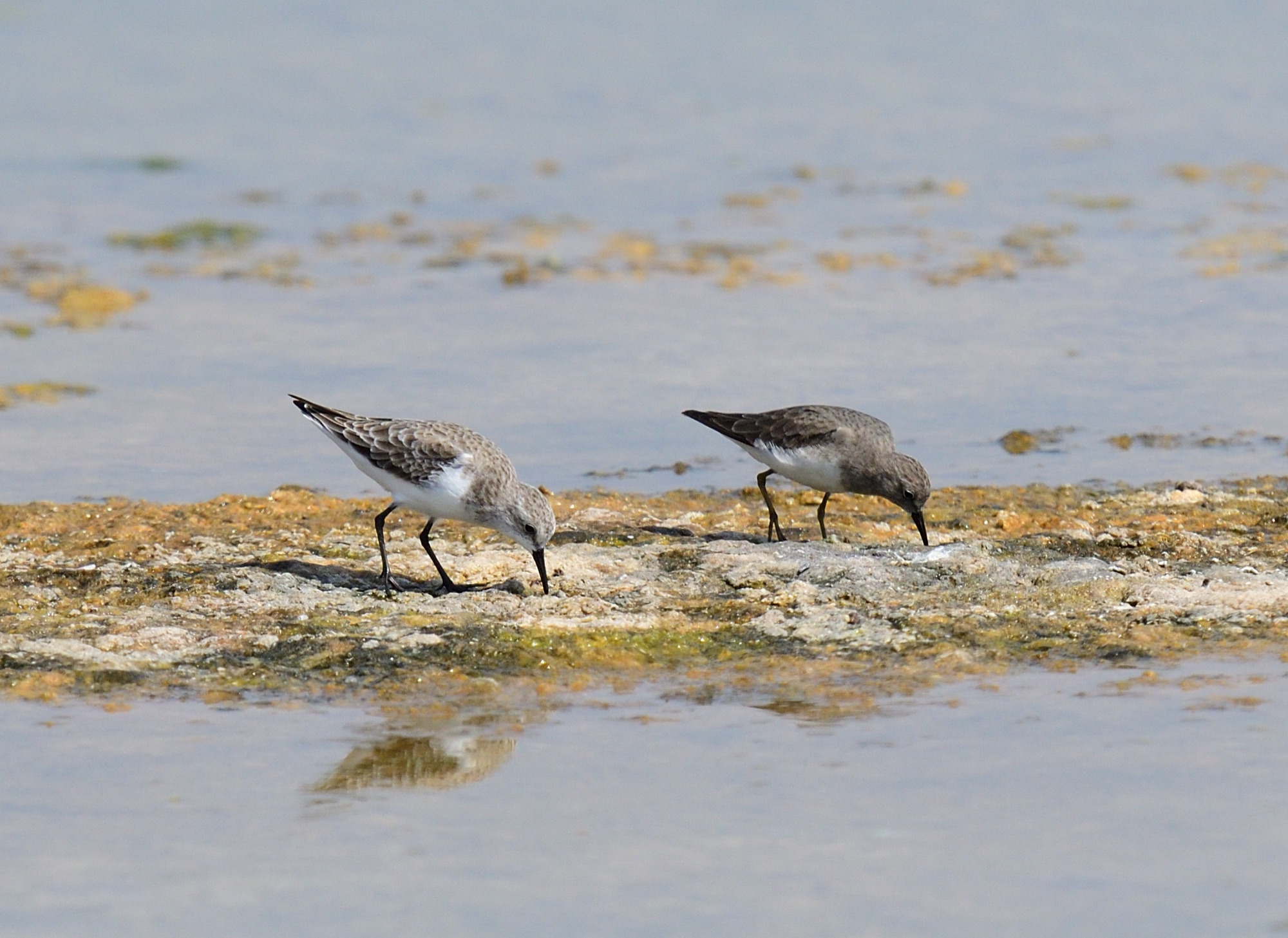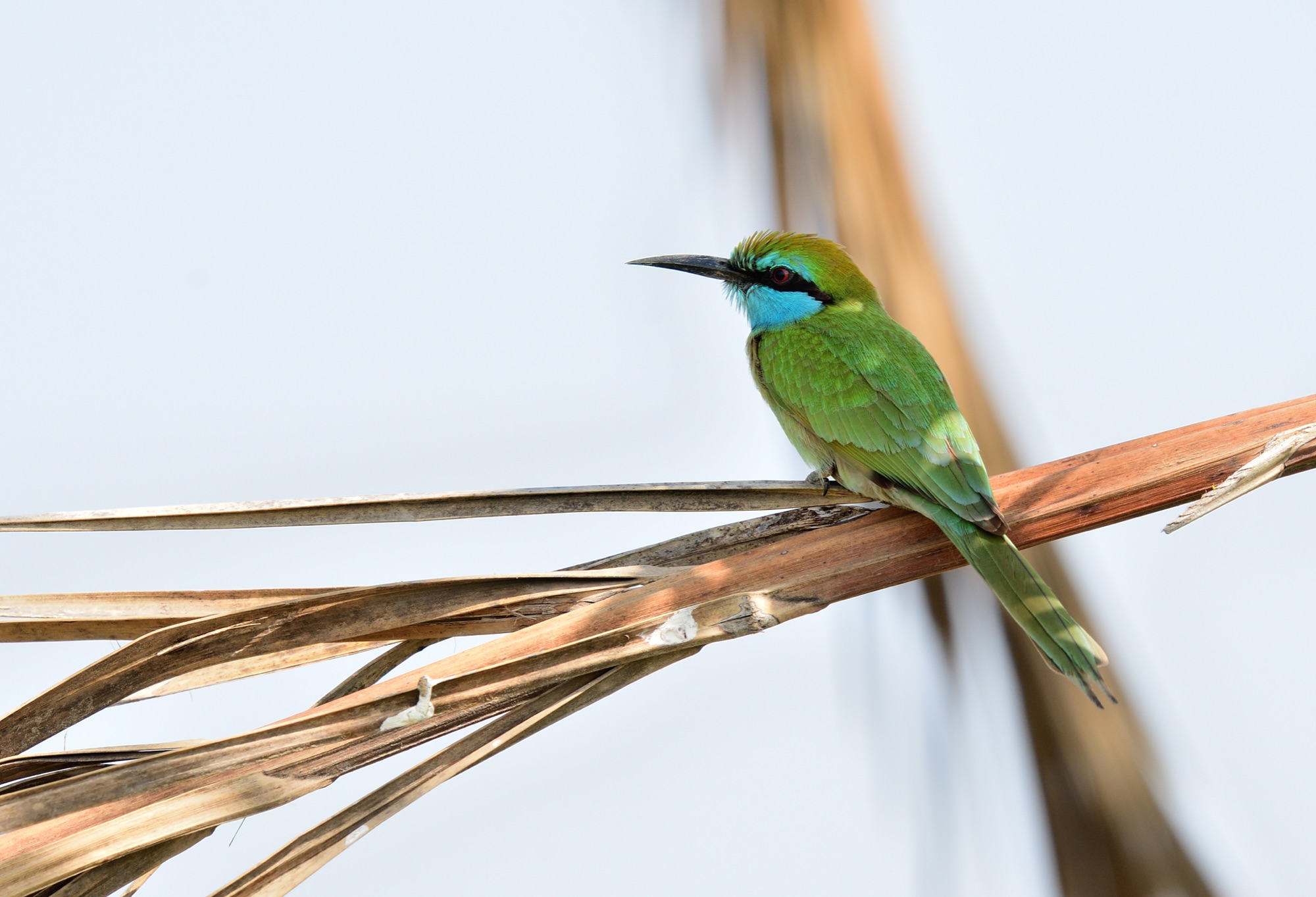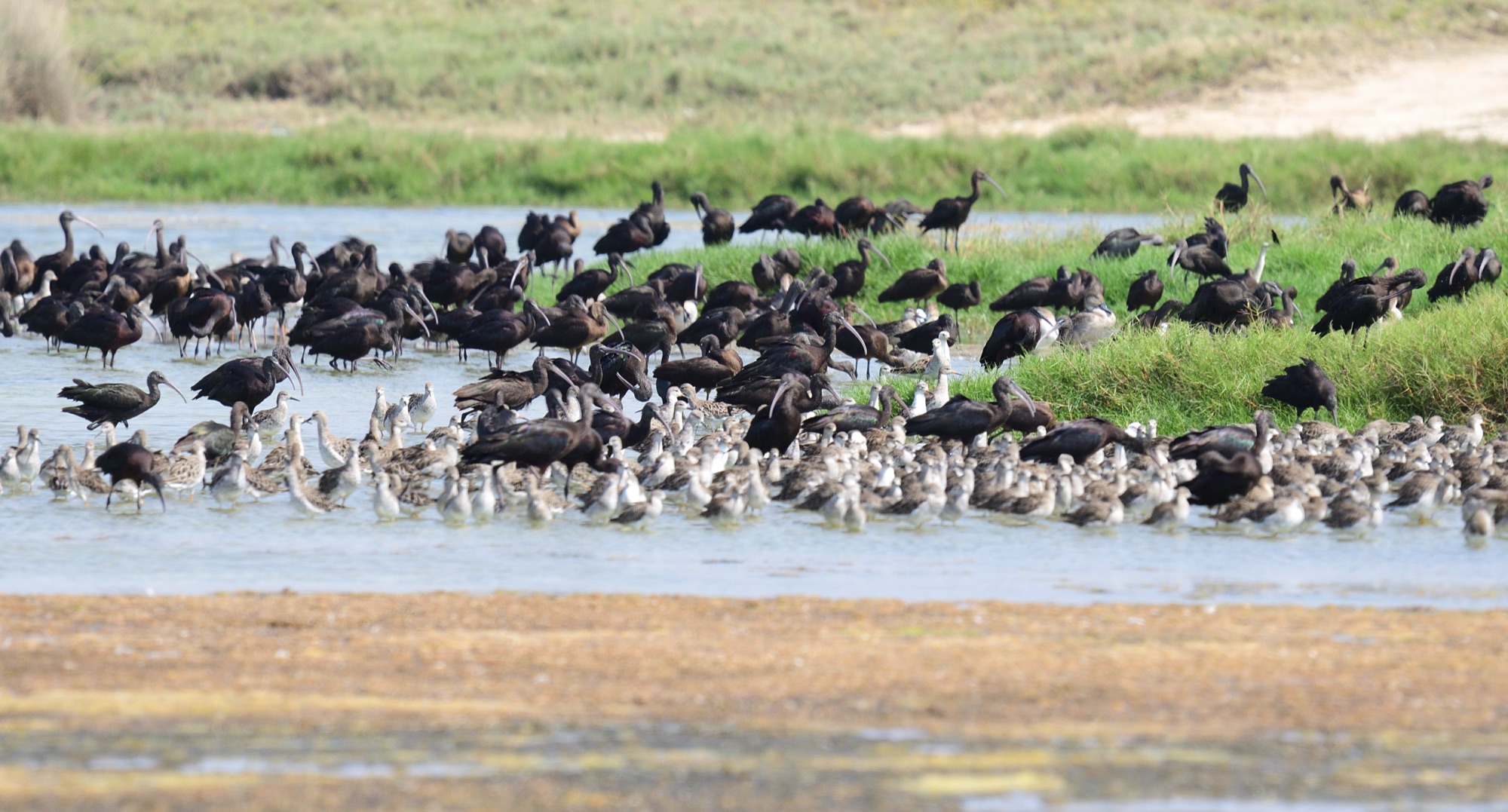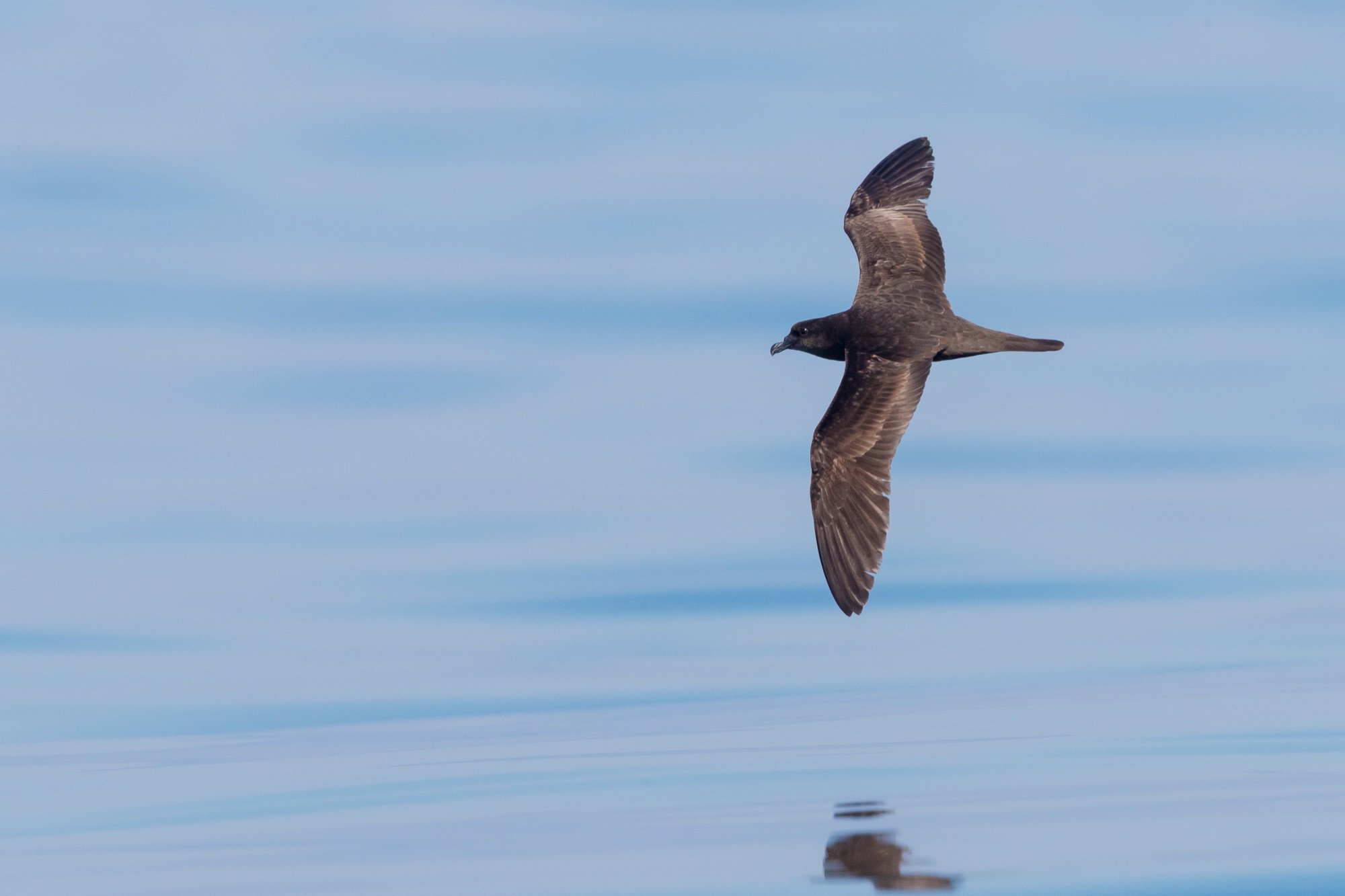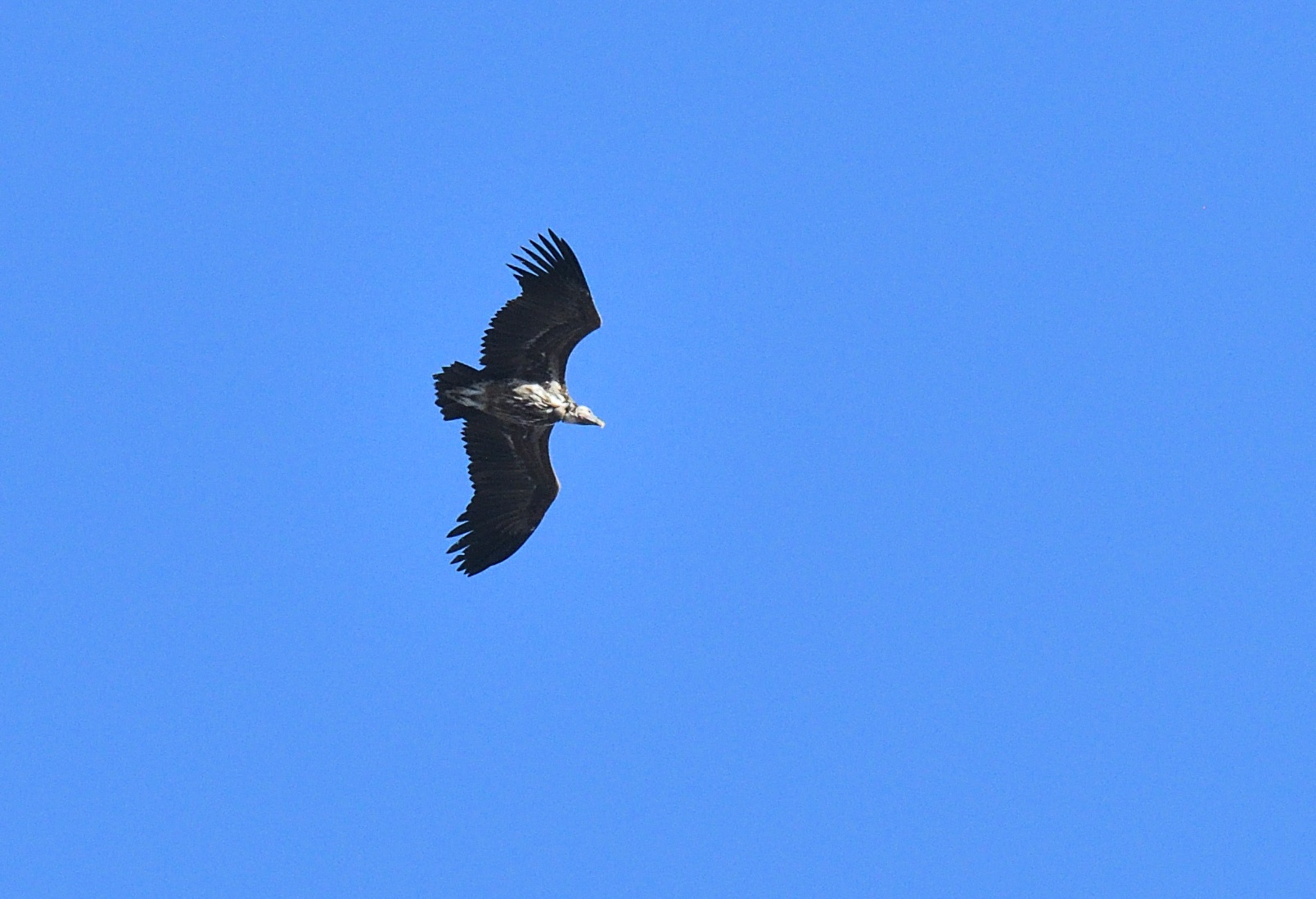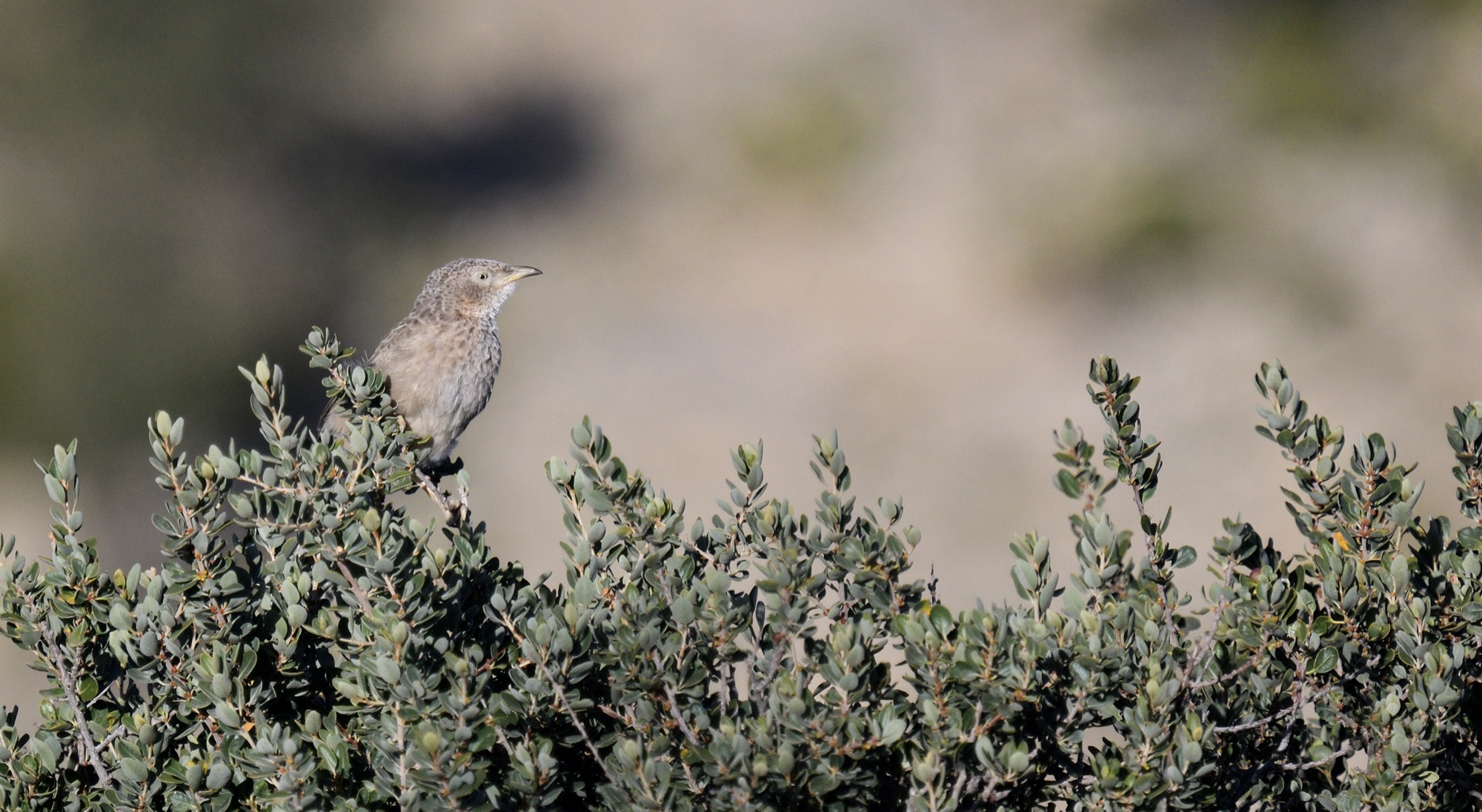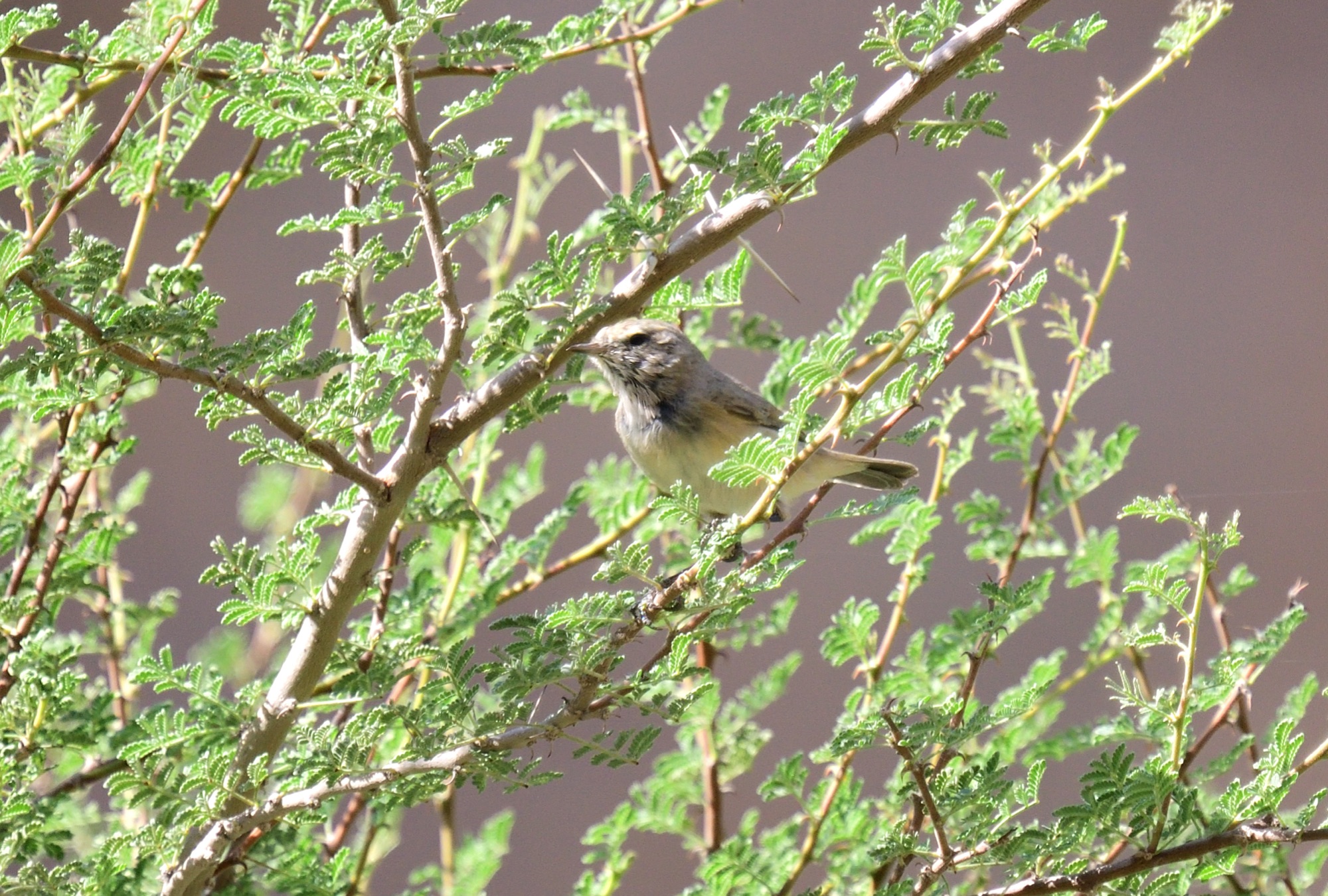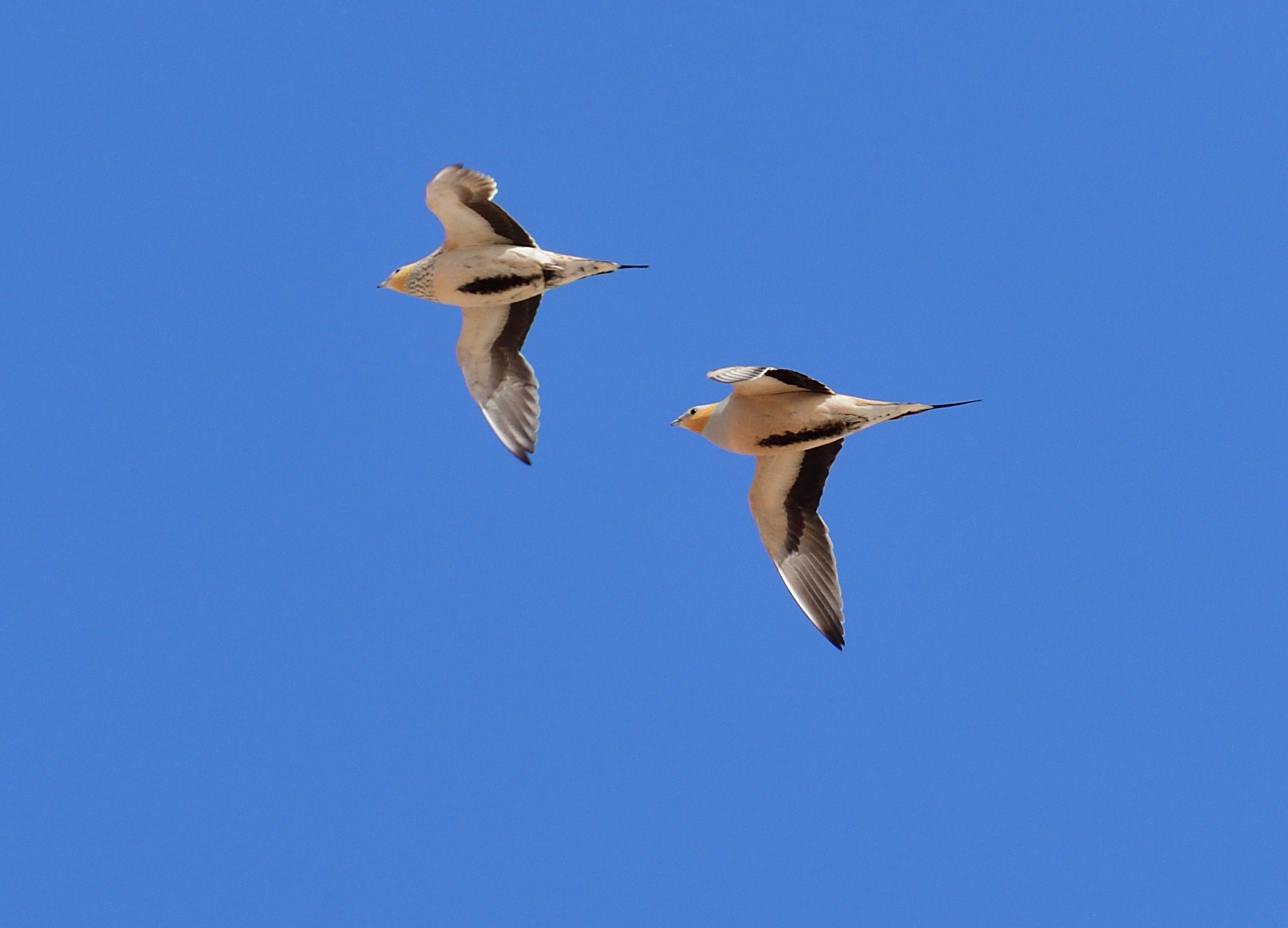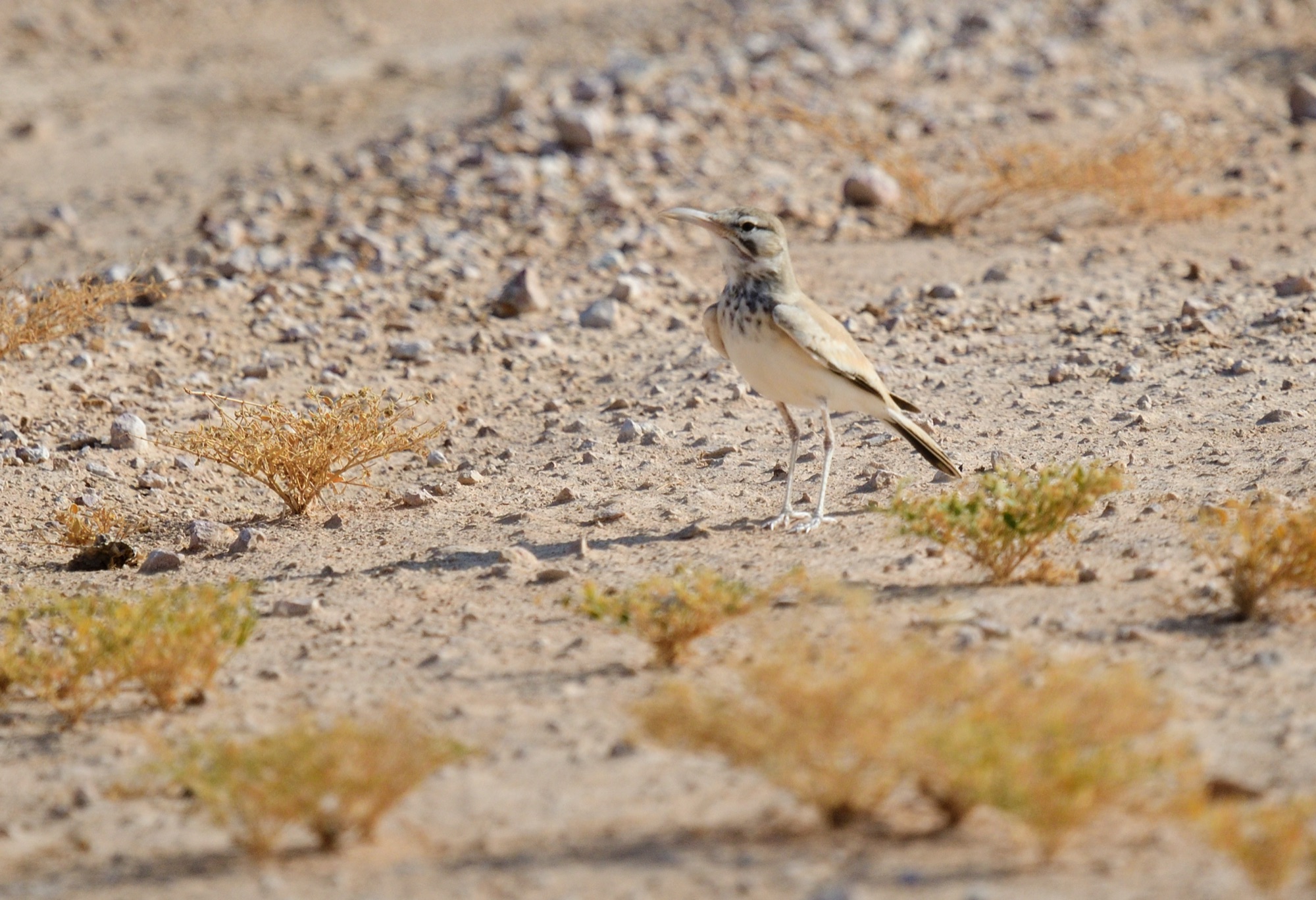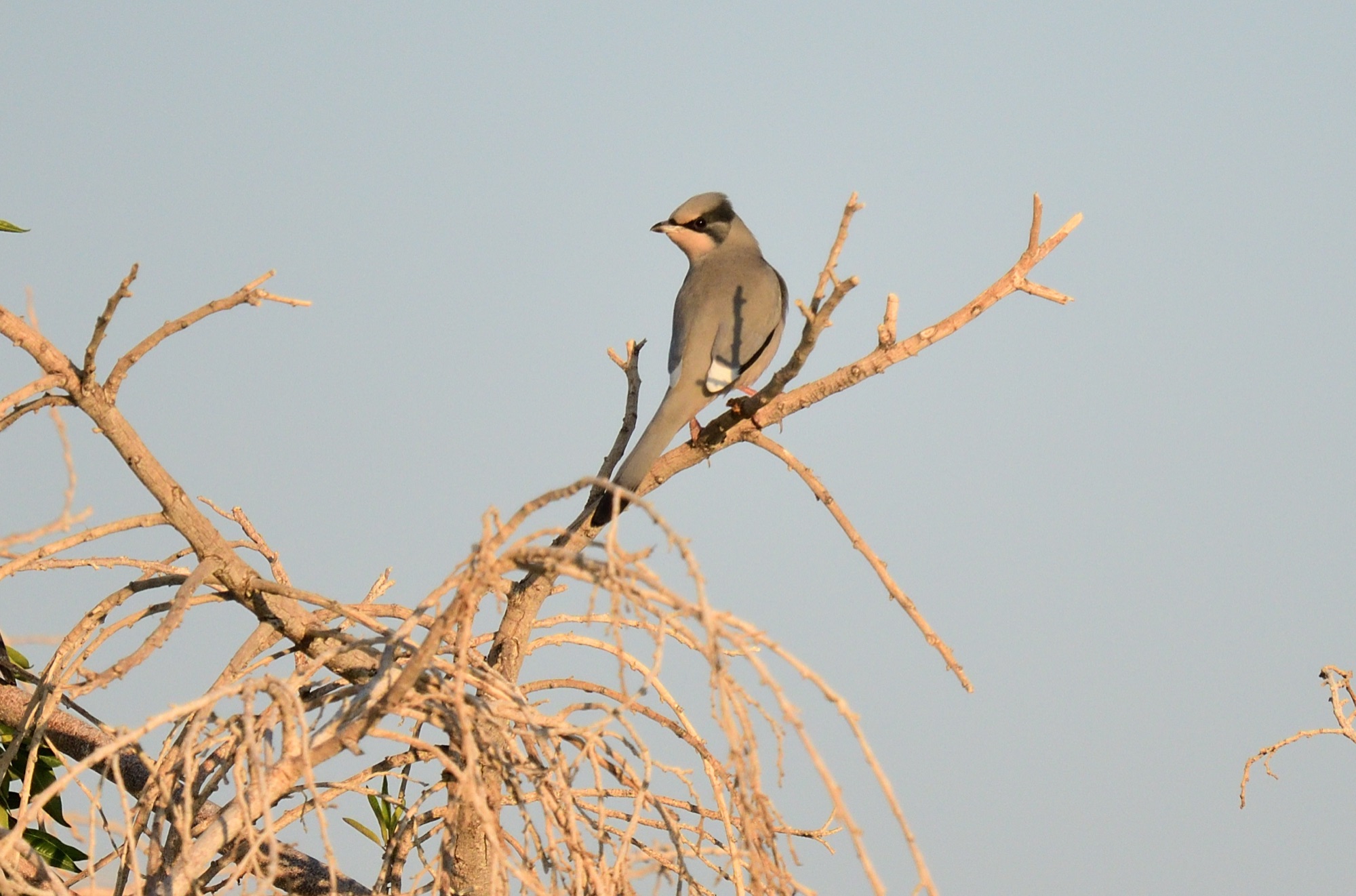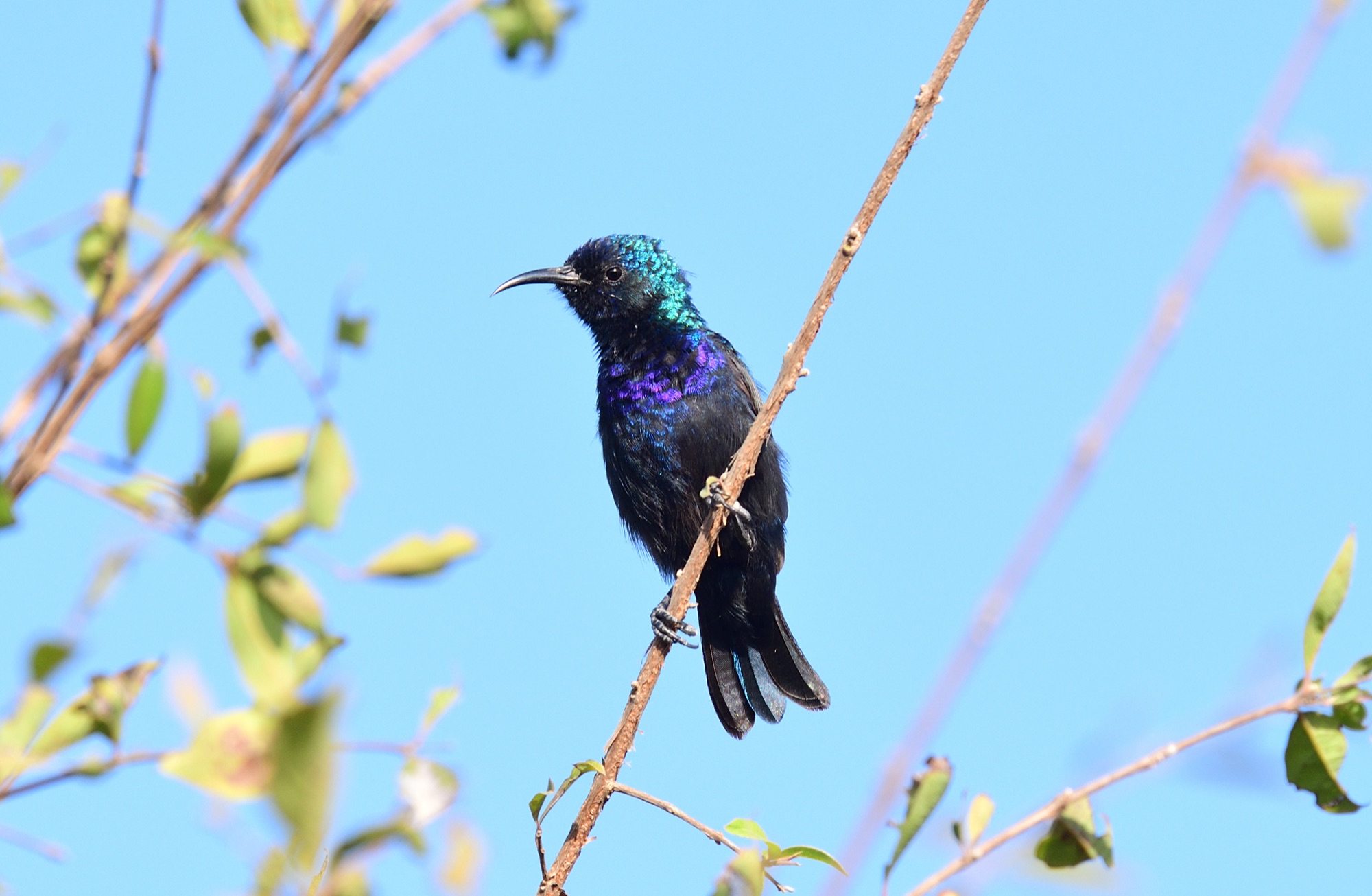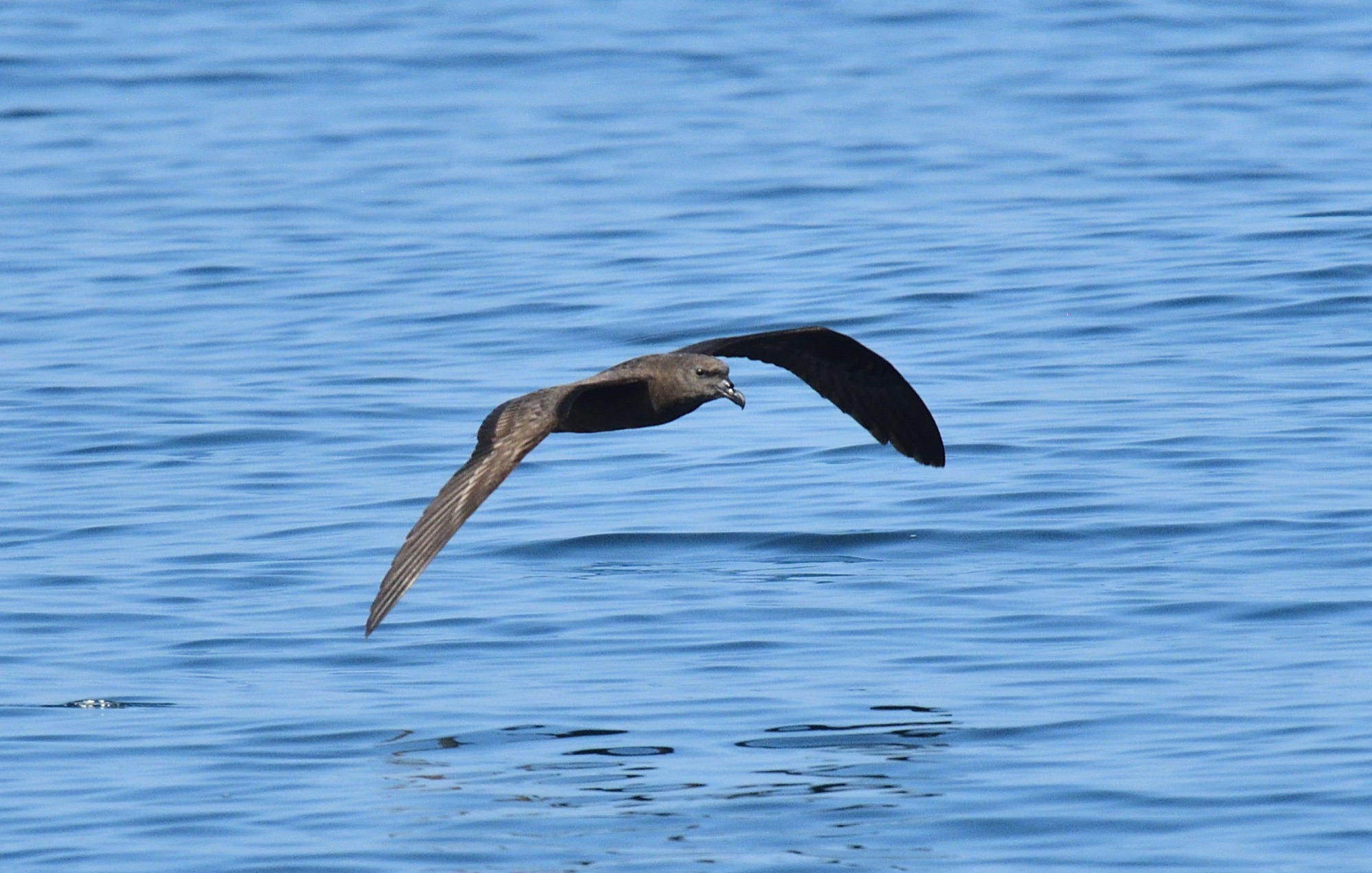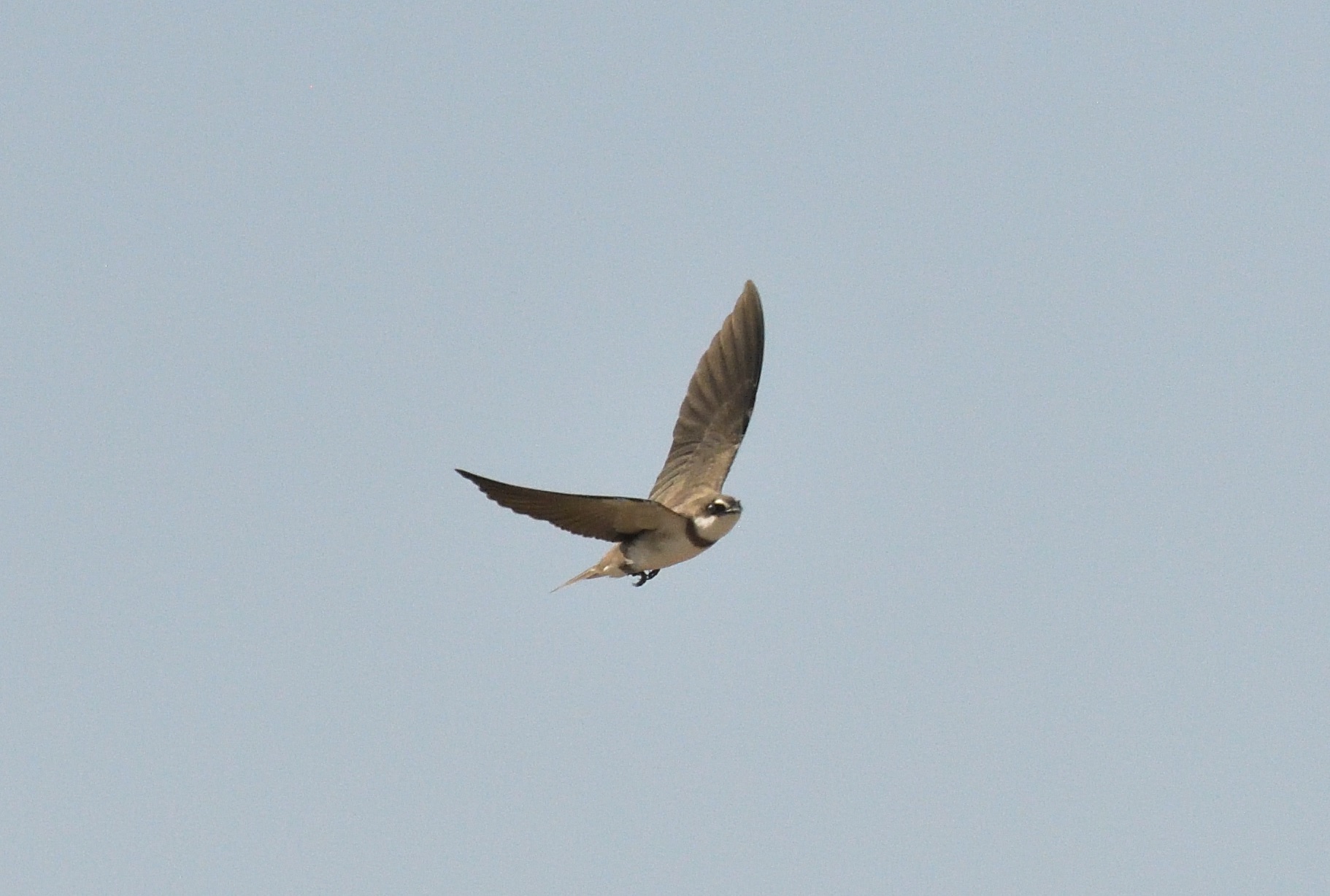OMAN TOUR REPORT 4th Nov - 13th Nov 2021
SUMMARY:
This is a shorter version of our regular Oman tour and was designed around certain species and sites. Yet this tuned out ot be an amazingly successful 10 day blast around the Al Hajar Mountains and various places in the south. We managed to find the 1st Banded Martin for Oman and 7th Blyth's Reed Warbler, highlighting the amazing rarity potential of this brilliant country. Pleaser have a read of our daily diary and see what you think.....
Day 1 MUSCAT - SAYQ PLATEAU
So here we are, in the Sultanate of Oman. It’s a bit of a dream really as just a few months ago this wasn’t even on the radar of possibilities to travel to - oh how things change. In this almost-post-apocolyptic-covid-world the UK travel rules have changed numerous times and Zoothera Birding has constantly been trying to change alongside. More so than any other tour company. We were first to say “no deposits required”. We were the first to utilise large private villas and houses for our sole use for some tours, rather than hotels where you’re shoulder-to-shoulder with strangers at meal times. We are the only UK company to attempt brand new and last-minute tours to coincide with very recent travel rule changes. And we accomplished all of this. Anyway, back to the task in hand as they say! This is an abbreviated version of our main tour and you will notice we have not visited Barr Al Hickman for Crab Plover - but please don’t worry as we definitely do this on our full tour. Also, as is ‘the new normal’ there were some formalities to be completed prior to entry into Oman, such as getting an eVisa, negative Covid-19 test result and uploading various bits of information onto a website. It turned out to be rather simple and one shouldn’t be put off by this and the Zoothera office will be on hand to assist and do the uploading for you if required.
Now for the good stuff…… We got the arrival formalities over with reasonably quickly, got the hire car and we were off.
We got the arrival formalities over with, well i’d like to say quite quickly but i’m not a liar! The queue for immigration was tedious and then there’s several more times you need to show your Visa, Covid vaccine status and the Omani Passenger Info sheet you et when uploading your negative Covid test prior to flying. it’s all straightforward, but just tedious. If that wasn’t enough the rental car guy was M.I.A for half an hour but eventually all was good and we were driving off towards the Al Hajar Mountains. One thing nobody tells you is that many, many Omani roads up here in the north do not allow you to pull of and look at birds. It’s literally impossible due to either high kerbs or incessant roadworks that mean if you do see something you just have to let it go! And we all hate that. Oh, the other thing was my Google Maps didn’t work until i swapped Sim cards with an Omani one, so just getting on the right road was a little bit of guesswork. But it’s all an adventure!
Anyway, we headed up towards Nizwa, stopping in a nice little roadside wadi, which was literally the first one we found we could reach from the high speed duel carriageway heading into the mountains. Unfortunately by now it was nearly 10.30am and hot, hot, hot. A few Indian Silverbills, Lesser Whitethroat and an Eurasian Hoopoe were the best we could do to add to the Indian Rollers we had seen along the highway. Heading off to Jabal Al Akhdar we stopped for lunch in a nice little restaurant serving delicious hot food and smoothies before we reached the police checkpoint at the base of the seriously steep climb up to Sayq. After checking in to our hotel we had a short siesta before driving back down the mountain seeing 2 Lappet-faced Vultures on the way and into Wadi Al Muaydin where we waited for dark and didn’t see Pallid Scops Owl like nearly the whole world and their dog does! Not a sniff in fact. We did get Grey Wagtail (woohoo), Purple Sunbird, White-spectacled Bulbul, several Pale Crag Martins, and best of all a Delicate Prinia (split from Graceful Prinia). A quick check for an outside, outside chance of Omani Owl drew a blank this evening but at least dinner was really good!
So it actually felt like a dreadful day. Just ‘one of those days’ in fact and tomorrow we go again.
Day 2 AL HAJAR MOUNTAINS
Up before sunrise and heading higher up into the mountains, just 20 minutes away from our hotel. The light is beautiful as we reach the plateau and can see the sun’s ray’s in the distance. Parking up just off the road we realise we are surrounded by birds, the majority of which are eastern Black Redstarts and there’s a lot of them (maybe 40+) plus a few Common Redstarts. Seeing so many birds just from where we are standing beside the car is amazing - and also a relief! Walking back down the road to a small pool we note White-spectacled Bulbuls are also common, along with many, many Lesser Whitethroats. Sifting through the warblers we eventually came across a stunning Menetries’s Warbler that didn’t hang around close enough to allow photos unfortunately. But I was made up as it was a long-wanted lifer for me! Even better (almost) was a group of Arabian Babblers that just kept getting closer and closer. The only other bird of note seen before breakfast was an Eurasian Wryneck, oh and a Green Sandpiper was calling the pool home too. We drove back to the hotel for breakfast (chicken nuggets and chips - weird huh?) and checkout and then changed our plans and returned to the same site as earlier. More babblers were found, in groups of 4 and seven, 7+ Grey Francolins, 2 Pied Wheatears and a Desert Wheatear.
Heading back down to the valley floor along the ridiculously steep main road we called into Wadi Muaydin, where another of our target birds was found quite easily this time - Plain Leaf Warbler. A little stunner of a bird with an obvious short, almost stumpy tail and really different call. Result! Leaving here, we drove towards Nizwa and our weird hotel where we just dumped our kit off and proceeded to drive to our selected wadi for an attempt at Omani Owl. What a stunning scene of huge cliffs either side of the gorge we drove through. In the little daylight we had to bird in, a male Blue Rock Thrush was the only new bird for the trip. However, after our picnic lunch in near-darkness several Pallid Scops Owls began calling and we tracked one down relatively easily although crunching feet on the dry riverbed tested patience somewhat. Just a shame i’m rubbish at photography and came away with blurry photos! Simultaneously, an Omani Owl called in the distance just as I was searching the tree in front of us for the owl, can you believe it? But no matter what we did afterwards, the Omani Owl never called again and after a 3 hour vigil we gave up as sleep became necessary. Damn!
Day 3 NIZWA - BARKA
Left early and drove for two hours on a brilliant Omani road (contrary to what I said yesterday) to the coast, where we headed for the promontory of Ras Al Sawadi. Upon arrival we were approached by a boatman who offered to take us around the islands that lie just offshore, which we promptly did as we wanted to try and see Sooty Falcon. The islands are less than a kilometre off shore so we were soon bobbing around the cliffs and almost immediately we spotted a Sooty Falcon perched right at the top of one island. Nice! We then spent an hour circling the other islands but couldn’t find another one, as I was hoping to get a close one for a photo. But it appeared that they had all migrated south. Still, we looked and looked and it wasn’t until we were leaving that a pair appeared over the first island and chased each other around the sky in quite a display. That was a much better view and we were all much happier now. During our search we wee able to get up close to some roosting terns and gulls, with both Greater and Lesser Crested Terns posing nicely, along with Sooty Gulls, a couple of Slender-billed Gulls and some Western Reef Herons as well. Oh and a Western Osprey was also present.
Back on shore we phaffed around checking a few sites with not a lot to show for it, including a farm that seemed to be in a state of decline but we did see our first shrike. It was a very pale Isabelline-type with a faint mask behind the eye that could only be a Daurian Shrike. There were also a few Namaqua Doves and a very nice and close Arabian Green Bee-eater beside our suv. So, with it now being early afternoon we drove to our hotel and checked in nice and early so we could have a siesta before tackling our last wadi in the Al Hajar Mountains and one last crack at Omani Owl.
We were driving into yet another remote and stunningly beautiful wadi with an hour to spare of daylight, not seeing a single thing apart from a few Indian Silverbills. This is what we learned was ‘the dead hour’ just before sunset. And even when the sun finally sets, it takes a lifetime to get properly dark. So we waited…. and waited. Eating our Subway dinner to relieve the boredom. One thing this wadi has, along with spectacular cliffs is an abundance of Little Owls. There were so many of them I was wondering if they would compete with the rarer Omani Owl and be aggressive towards them because we didn’t get a sniff of one. Just numerous Little Owls despite hours and hours of listening, waiting, more listening and a little playback. eventually we had to give in as tiredness is a bitch and being the only driver, after the adrenaline rush of looking for such a rare bird wore off I just had to get a couple hours sleep in a bed before we headed south tomorrow.
Day 4 MUSCAT - SALALAH - QATBIT
The deadly Muscat rush hour traffic nearly caught us out this morning as we found ourselves in a 45km tailback on the highway as we tried to get to the airport for our flight to Salalah. Fortunately, we diverted around some of the queue and made the flight with a few minutes to spare. Phew! Arriving in southern Oman after a short flight we were soon on our way in the rental suv and driving inland past Thumrait, where we had lunch, and on towards Qatbit. Our main destination of Al Beed Farm turned out to be an amazing site and afterwards we all just thought that this is Oman birding at its best. We knew that 4 Arabian Larks had been reported just over a week ago, and this became our main focus of the 4 hours we spent here. A lifer for all of us, we were determined to give it our best shot but despite driving everywhere we could across the desert areas and around the agricultural fields we failed to locate any. Not surprising really as it’s a vast landscape but we at least tried. There were lots of good birds here and as well as seeing our first Blackstarts, other new birds for the trip included Lesser Kestrel, 30+ Isabelline Wheatear, many Spotted Sandgrouse, at least 4 Greater Hoopoe Larks, Long-legged Buzzard, European Roller, Great Grey Shrike and White Wagtail, with Desert Wheatears being ridiculously common.
By mid-afternoon the heat and flies had got to us, so we decided to drive north to the interesting Qatbit Motel. Upon arrival the place looked abandoned and no-one was at home, so I made a few phone calls and was informed someone would be coming to assist us soon! So that was a relief to say the least! And it’s not a problem to have some free time here as the gardens act like a migrant trap and we were keen to see what was here. In about 40 minutes of birding we found 2 Red-breasted Flycatchers, Common Chiffchaff, Spotted Flycatcher and amazingly, an Asian Koel. I then got a phone call to say we could check-in now and we promptly did. It’s a much better looking place on the inside than the outside! So I filled up with fuel a little later and we ate at one of the restaurants close by before having an early night for a change!
Day 5 QATBIT - MUNTASAR - THUMRAIT
Set off before sunrise to Muntasar Oasis further up into the Empty Quarter, a true oasis in the middle of the desert/nowhere. It’s over 15kms away from the main road and is one of those exciting sites where you never know what’s present. Upon arrival I was excited to see so much water and it spread along the line of palm trees for several hundred metres. This is the place everyone says is great for sandgrouse to come in and drink, well none did today and i’ve seen a few trip report where people drew a blank. Maybe we were just unlucky today? Anyway, a Turkestan Shrike was the literally the first bird we saw on leaving the vehicle, followed by a Great Grey (Arabian) Shrike of ssp Aucheri and a very pale-looking Steppe Grey Shrike (pallidostris). Then our attention was diverted to a few shorebirds present, and we saw 2 Wood and 2 Green Sandpipers, several Water Pipits, a single Red-throated Pipit, and amazingly a lone Dunlin! As it was early we walked around a bit and split up, with me trying to get better photos of another Turkestan Shrike and the boys wandering along the line of the palm trees and finding a Great Snipe and African Collared Dove. I tried to relocate the bird but it disappeared, so I had to content myself with sitting in the shade and watching a flock of Blue-cheeked Bee-eaters at point-blank range! Whilst watching them, they were joined by a few European Bee-eaters too and it was fun trying to get flight shots of these beauties although I think they just toyed with me as several blue-cheeks kept perching next to me, literally within touching distance! We then retreated to a suitable distance and waited in vain for sandgrouse to appear and when we got bored of waiting headed a few hundred metres away to search the low bushes for Asian Desert Warbler, which we found quite easily. With the temperature soaring we returned to Qatbit for a late breakfast at our by now favourite restaurant and then checked out the gardens of the motel. It seemed quieter than yesterday with only a single Red-breasted Flycatcher, a few Common Chiffchaffs, including one confirmed tristis.
From here we drove south to Al Beed Farms and drove around again, seeing a fantastic selection of birds. This time there was sandgrouse everywhere, albeit they never allowed a close approach but there were literally hundreds of Spotted and a few Chestnut-bellied Sandgrouse around. There were also many more Greater Hoopoe Larks and we estimated somewhere around 15 were seen. we also saw Black-crowned Sparrow-Lark which seem very scarce right now, 3 Pallid Harriers, more Lesser Kestrels, Common Kestrel, and plenty of commoner species. We did check out another, long abandoned farm where a male Pallid Harrier was the only bird we saw here, so we decided to head south to Thumrait where we had planned to spend the next 2 nights.
Day 6 MUDDAY - SALALAH
Mudday is currently THE place to see wintering Hypocolius in Oman and we were heading along the road in the dark, aiming to get there for first light. It’s only an hour’s drive from Thumrait so we didn’t need to leave until 5am and it wasn’t until we were approaching this rather isolated small town that the sun rose above the surrounding hills. Perfect timing! We drove to the southern side of town and the oasis of palm trees surrounding a pool. At first all we saw were lots and lots of Eurasian Collared Doves, Desert Lark and a Bluethroat skulking at the edge of the water in some dense vegetation, so we decided to walk along the road where a Daurian Shrike was the best bird we found. That was until I picked up a Hypocolius flying overhead and it might have sneaked past us if it had not been calling. It was heading in the direction of the pool so we rushed back up there and found 5 Hypocolius perched up and calling in a bare tree. Wow! The light was against me for taking photos but the they flew down to a fruiting tree and showed incredibly well, with both a female and then a male taking in turns to perch right at the top of the tree! They stayed maybe just a few frantic minutes before flying into the dense grove of Palm trees, and disappearing from view. You can’t beat the adrenaline rush of an experience like that and so we drove into the village and found a place to get some breakfast. Fried eggs with bread and a cup of coffee was on order and a bit of friendly chitchat with a few locals was on order before we headed out once more. Sand Partridge was a target for one of my mates but despite hearing them at several places we just couldn’t locate one, so that will have to wait for a few days…. Although walking around a nearby wadi produced a Pied Cuckoo of all things! Also we didn’t bother sifting through the millions of Eurasian Collared Doves for an African Collared Dove as we’d already seen one, but more worryingly was the lack of Nile Valley Sunbirds. Hmmm.. Anyway, after a few sessions of scanning various wadis around the town and seeing practically nothing we decided to head back towards Thumrait, but instead off staying at the same hotel we decided to go directly to Salalah and after a few phone calls I managed to get us rooms at the same hotel we were booked into for the following 4 nights.
Arriving at the hotel with a few hours of daylight spare we checked in and dumped our bags in some nice upgraded rooms before setting out on our first birding session in this amazing area. And I have to say that the birding around Salalah is phenomenal. But more of that to follow. For now we headed to Ayn Hamran, one of the closest wadis to our hotel where Arabian Golden-winged Grosbeak had previously seen a couple of weeks ago, coming in to drink in the morning. We didn’t expect to get it and we didn’t but to be honest I didn’t really go much on this place from what we saw. I think it was just a bit too public and busy for my liking and too many camels! But I would change my mind on our next visit towards the end of our stay down in the south! Anyway, we checked out the pool beside the parking area and saw our first Cinnamon-breasted Bunting singing away, African Silverbills coming in to drink and a flock of Abyssinian White-eyes, both of which are incredibly numerous everywhere down here in the south. We also had nice looks at African Paradise-Flycatcher, our only Grey-headed Kingfisher of the trip and had a constant backdrop of calling Blue-cheeked Bee-eaters around us all of the time. We decided to wait until dark and make an attempt at Arabian Scops-Owl. Again, waiting for dark took an eternity but it was well worth it because as soon as the light went we could hear several scops owls calling further up the valley. We tinkered with two calling birds initially, but they didn’t really respond or come in to my ipod. So we waited a while and then more calls came from further away, so we walked up the path, which was lit by the clear starlit sky and moon and approached two birds that seemed to be in a duet. In the dark it was difficult to know the layout as we seemed to be confronted by a wall of trees and the scops owl was calling from right in front of us. So I had to put the flashlight on just in case the owl was visible, but we were blocked by the trees. So we walked along the edge of the trees and found a path that cut back inside and we found ourselves in a little hollow or semi-circle with trees all around. The owl was calling very close but difficult to pinpoint the exact spot, so it must be higher up than I was expecting. Walking further inside the forest brought me more or less directly underneath the bird and I could easily put the flashlight on it and we enjoyed fine views. There was a bank behind us and I scrambled up it and amazingly the Arabian Scops Owl stayed on its perch and we had much better and almost eye-level views of this superb endemic to round off a very good day.
Day 7 AYN TOBRUQ - EAST KWARH - MUGHSAYL BEACH & WADI
Our best bet for Arabian Golden-winged Grosbeak seemed to be at the junction of Ayn Tobruq and Ayn Athum according to a message I received last night from some other birders doing the Oman circuit at the same time as us. As we drove in two Eastern Imperial and a Steppe Eagle were seen feeding at a carcass. So we were on site at 6.30am and positioned ourselves at a decent distance away from the dripping pipe and within view of the full camel trough. The news was that the grosbeak comes in to drink at 08:15 so we had a bit of time to check the area. Quite a few birds were coming in to drink, with flocks of African Silverbills and many Cinnamon-breasted Buntings appearing. An Eurasian Wryneck was seen, a Short-toed Eagle hovered on the hill above us, Tristram's Starlings came in pairs to the camel trough and it was quite entertaining as we didn’t really know what to expect. As time went on the anticipation levels kept raising, as this is probably the toughest speciality to get right now. And sure enough, bang on 08:15am a male Arabian Golden-winged Grosbeak appeared on top of a nearby tree. By the time i’d got the scope on it and we’d all looked through it the bird flew and never returned. So I think we were very lucky!
Our next site was East Khawr, just a 25 minute drive down to the coast and what a place this is. Stacks of birds and huge potential for a rarity or two. Well, we didn’t find a rarity but the birding was superb, and we began with a Masked Booby sat on the landward side of the beach, being harassed by House Crows. Around the lagoon were flocks of Glossy Ibis and Ruff, and on a small grassy island a Collared Pratincole was seen. What we found really cool were the identification comparisons: Intermediate Egret and white-morph Western Reef Heron, Indian Pond Heron (check out those rectangular lores!) and Squacco Heron, Little and Temminck’s Stints. Species such as Great Spotted Eagle, Garganey, Purple Heron and Western Osprey also added to the mix.
After calling in to a petrol station for some much needed cold drinks we headed back towards the hotel and a fantastic site called Ayn Razat. There was a day roosting Arabian Eagle Owl here a few years ago, so we decided to check the area out and, of course, we didn’t find any owls. However, there’s a surprising amount of water here and even on the approach road we had Temminck’s Stint, Green Sandpiper and Citrine Wagtail basically in the road and feeding beside a small trickle of water. Up in the wadi we found Long-billed Pipit and enjoyed incredibly close views of one bird in the shade of some large trees, with a pair of Shining (Arabian) Sunbirds feeding overhead. Driving out of the wadi, the road follows a great little waterway and we were totally surprised to see a stunning African Openbill standing at the water's edge. Wow!
So we then headed an hour down the coast to Mughsayl Beach where thousands of gulls and terns were present. It was an absolutely phenomenal sight to see so many birds and we sifted through as best we could. The majority of the birds were Sooty Gulls, with smaller numbers of Heuglin’s, Steppe and Slender-billed Gulls and huge numbers of Common Terns loafed on the beach. However, out to sea there were even more birds flying around it was absolutely mental…!! Our first Persian Shearwaters were here, and we also saw our only Common Noddy, with a few Socotra Cormorants flying by. Back on the beach I was determined to find White-cheeked Tern and careful scanning of the tern flocks eventually revealed a single bird. This was an awesome place but we had to drag ourselves away and head into the nearby wadi in search of Desert Owl, but not before stopping for more cold drinks.
The drive into the wadi was an adventure in itself and you definitely need a 4-wheel drive to get in. We drove right to the end, as i’m sure everyone does and this turned out to be a good move as on the drive in we stumbled across a mixed group of Arabian and Sand Partridges feeding beside the track. A little further on a Hooded Wheatear was spotted and then when the track became too difficult we stopped and found a pair of Arabian Wheatears. Walking a little further on a Rufous-tailed Rock-Thrush was seen by one of us and we enjoyed further views of Arabian Partridge before the light began to fade. So we waited…. and waited and despite worries it wouldn’t actually get dark tonight… it did! So we waited in darkness for Desert Owl to call but nothing but there was nothing but silence for an hour. So I fired off a call from my iPod and waited. Nothing. And then some moments later we heard an Omani Owl call way off in the distance. So we waited some more but the bird never called again, which was very frustrating. We left the site with heavy hearts and headed back to the main road, stopping a few times to play the call. Luckily, we had a response at one of our stops and walked towards the bird and I thought we would get it as it called several times before calling one last time from further away and then from across the wadi behind us. Damn! But we had a few nights spare and I planned to come back, with quite a bit of confidence that we would nail the sucker!
Day 8 WADI DARBAT - TAWI ATYR - KHAWR RAWRI - AYN TOBRUQ
We decided to visit Wadi Darbat as it has such a good write-up but I must confess, it’s not my favourite place. Too commercialised and too many camels for my liking, so we wasted our early morning coming here and all we saw were many Squacco Herons and a Bonelli’s Eagle. Leaving here we drove up into the highlands and Tawi Atayr, the traditional stake-out for Yemen Serin. Well, after a little bit of messing around with wrong directions we found the sink hole and parked in the car park that resembles a camel’s toilet! I’ve heard many reports of other birders spending hours and hours waiting for the serin to show and I wasn’t about to do that. So we had our packed breakfast, searched the surrounding area that includes weed-filled gardens and allotments and stood around aimlessly at the sink-hole without a sniff of a serin. But we did see an Eastern Imperial Eagle, Garden Warbler, a cracking male Palestine Sunbird and numerous buntings and white-eyes as normal.
Calling time on a not-so-enjoyable visit we dropped down to Khawr Rawri, heading to the seaward side and being astonished at the lack of birds. A couple orientalis Eurasian Curlews caused us to get excited for a minute or two with their ridiculously long bills, at least 4 Western Ospreys were around and there were some Kentish Plovers, a Wood Sandpiper and some Common Sandpipers. So cutting our losses we headed to Ayn Razat, as it was really good on our last visit but we saw nothing new so made a quick decision to head to Ayn Tobruq and see if any Lichtenstein’s Sandgrouse would be coming in to drink at dusk. And…… no there weren’t. So needing to drag something out of a hard day we headed to another wadi in the hopes of finding Arabian Spotted Eagle-Owl. I wasn’t sure how to go about getting this one, as normally you get eagle-owls at a day roost right? Well, I needn’t have worried as after a short walk the unmistakeable sound of an eagle-owl began rolling down through the wadi. The problem with such a low frequency call is that it can travel quite a distance so we walked further into the wadi and stopped to listen. The call was closer but where? As the night was clear and the stars and moon bathed the area in their light I scanned the hillside above with my binoculars and found the bird perched on top of a tree. Well, it’s not a skulker is it? It was quite a thing to be able to discern the distinctive silhouette of this bird and as we were watching it, it flew down the hill towards us and landed closer. Wow! This time the spotlight really picked up the birds details and then it flew across the wadi to the other hillside and was gone! Thank goodness, we’d actually nailed one target bird today!
Day 9 MIRBAT PELAGIC - WADI MUGHSAYL
So this was it, the day of the pelagic and who doesn’t like seabirds huh? We were out on the water by 07:45am and what a glorious day it was! The sun was shining, the sky was blue and it was paradise. We hadn’t gone far out to sea when our first Persian Shearwater of the day appeared and we came across a flock of them sat on the water. In all we recorded 190+ Persian Shearwaters and they were on constant view. Jouanin’s Petrels started to appear shortly after we had been watching a group of 25 shearwaters but the first few were all rather distant and not attracted to Hatem’s chum. The first of 3 Flesh-footed Shearwaters was then seen, followed by some closer Jouanin’s Petrels and eventually we had some stinking views of this most-wanted bird and we estimated there were over 30 seen this morning. At least 30 Masked Boobies were seen, 3 Socotra Cormorants flew by, a lone Brown Booby appeared as well, there were some distant Spinner Dolphins and best of all, a mother and calf Dwarf Sperm Whale. And that was us done after 3 hours of bobbing around on a flat, calm ocean.
Driving out of Mirbat a flock of 150+ Abdim’s Storks were seen soaring overhead and right by our car a Clamorous Reed Warbler skulked in the shade of a large tree. So now we had a decision to make as we needed to make up for yesterday’s debacle and nail that pesky serin. We had been given a new site but it was a long way away so decided to go for it. It was 11am and we wanted to end up back in the wadi to make our second attempt at Desert Owl later this evening. So off we went, stopping at the nearest petrol station to fill up and get some much-needed cold drinks and then called in to a headland where Forbes-Watson’s Swifts are nesting. I managed to get some poor record shots of the birds showing a full crop and noting their shape and overall colour. But we didn’t linger and were soon off on our road trip to twitch Yemen Serin. it was a long and torturous journey along a winding road with hairpin bends but the scenery was stunning. By late afternoon we were on site and as we drove down to the car park a few small birds flew in and landed on a nearby fence. Serins! We all jumped out of the car but we were looking into the sun so manoeuvred around to the right and got a clearer view only for the 3 or 4 birds to disappear. But no need to worry as a few minutes later they flew back in to feed and yep, they most definitely were Yemen Serin. So I parked the car and walked back to get further views and try to get some photos but that didn’t pan out too greatly, although I did get some record shots. We also had superb views of Arabian Partridge alongside the road as well.
Well, time was passing all too quickly and we had to get down to Wadi Mughsayl for Desert Owl. The pressure was on as another British crew had seen one very well, albeit in a different area to my stake-out, so I wasn’t worried about ‘my bird’ being taped out and, as always, I didn’t want to stress a bird out that’s being continuously taped. So off we went on a mission, and eventually reached the wadi and parked up near my site. It’s a 20 minute walk to a spot below the cliff and we placed ourselves between the large boulders and waited. We’d made a bit of noise walking in, crunching pebbles underfoot etc so we just sat down in silence for quite a while. Overhead, once again, it was a perfectly clear, starlit sky and you could see quite some detail rom the landscape around us. Sitting on boulders isn’t the most comfortable of sensations but there’s worse things in the world to be doing right now and so we waited. A wall of silence enveloped us and we wondered if tonight was going to be ‘one of those nights’. An owl finally calls after a tense 25 minute vigil from miles up the wadi, and i'm hoping it's not 'our' bird. So I pull out my iphone and set the volume low and play one burst of a certain call-type. Immediately, I get a response, not once but twice. I reply once but then it all goes quiet until a couple of minutes later it calls again but this time further away. Remembering my error from the other night I consider spotlighting the cliff face in front of us but i'm not sure if that's the right thing to do because it seems highly unlikely that it would have come down towards us. But I know playing the call at this time of year can sometimes push the bird away. So I light up the cliff face but there's nothing there. Damn. So I wait another 20 minutes, which in the dark seems like an eternity. Still, there's no owl call. So I wait a bit longer. Should I play the call again? For some reason I decide not to and wait another few minutes. I'm thinking that the bird has just gone. Steeling myself to another dip and knowing I shouldn't play the call I take a deep breath and shine the spotlight on the cliff. "Bloody hell" I say under my breath (or something similar) as a Desert Owl flashes across my torch beam and lands maybe 40 metres away and stares balefully at us. As my mate takes over torch duty I fire off some record shots (see below) with a racing heart and what seems like an unsteady hand. But thanks to the power of Nikon i've got something reasonable at 8,000 iso to capture the moment. What a freakin' bird this is! And then it's all over as the spotlight is turned off and we do 'air high fives' as seems befitting in this post-covid apocalyptic new world we find ourselves in. And it's a bumpy ride out and back to our hotel for a non-alcoholic celebration, Omani-style.
Day 10 AYN HAMRAN - RAYSUT - EAST KHAWR - SAWHANAUT FARM
With all the specialities done and dusted, today was a 'free' day to go birding and just enjoy our last day. We decided that we still hadn't done a wadi a the right time of day and there were a few species we still wanted to see, so Ayn HAmran ticked all the boxes and was also a potential site for Arabian Golden-winged Grosbeak to come down and drink. It's not very far from our hotel so we were on site by 6;45am and walking downstream, pushing Green Sandpipers along as we walked. A warbler caught my attention, looking pale sandy brown in the morning light and with a stonkingly long bill. Sykes's Warbler was my first thought but the long undertail coverts should have pointed to an 'acro' of some type. Still, I was on the Sykes's train for some time until sense took hold and Killian Mullarney looked at my photos to point me in the right direction of Oman's 7th Blyth's Reed Warbler! Cheers mate! This only goes to prove that you can't take your eye off the ball in Oman and expect the unexpected. The warbler showed for just a couple of minutes before we lost it, so we continued looking for grosbeaks without any luck. Still, Black-crowned Tchagra and Arabian Warbler were good finds amongst numerous other birds during a good first session of the day. Dashing back to the hotel for breakfast seemed incredibly civilised before heading over to Raysut Sewage Treatment Works, where a bunch of Abdim's and White Storks is loafing beside a settling tank.
From here we drove over to the archaelogical gardens where everyone sees Spotted Thick-knees by peering through the fence and we did the same rather successfully seeing 5 birds. Moving on to East Khawr we had a marvelous time parked upa the water's edge. Common Pochard was the only new addition to our trip list but there was plenty to see and we enjoyed watching the Glossy Ibis and Ruff flocks wheeling about. A few nice white-headed Ruff were simply stunning, the usual selection of shorebirds were present and some loafing Heuglin's and Steppe Gulls caused me a few headaches. So we moved on to our next site, stopping along the road to view some soaring raptors over the town that turned out to be a party of 4 Crested Honey Buzzards, a mixture of adult and imature birds that are apparently overwintering here. So with that excitement over with we headed to Sawhanaut Farm, a place i'd put off going to as they dont let birders in....
Well, I bowled up and waved my binoculars a the security guard and he let us in! So off we went, heading towards one of the vibrantly green irrigated areas. Well, what can I say? We ended up finding Oman's 1st Banded Martin here. There was a mass of Barn Swallows feeding over a field, maybe 5,000+ who knows and it's difficult to really accurately estimate that sort of activity. There were also flocks of Whiskered Terns, a few White-winged Terns, Sand Martins, 100's of Western Yellow Wagtails, and flocks of sandpipers and stints moving around. It was phenomenal and mind-blowing at the sdame time. Anyway, back to the martin. One of my mates initially picked up a large martin perched amongst a flock of Barn Swallows on some dead bushes. Just as I got on the bird it flew and then panic set in as you doubt what you saw. Was it really that big? Did it really have white on the face? Was the breast band that wide and dark? We spent the next hour driving around trying to get closer to the field and find somewhere to view from. It was all rather frustrating and there were so many birds distracting us, like Teminck's Stints feeding in a puddle right beside the car, a fine Masked Wagtail bathing from a dripping pipe, some dark-headed wagtails we tried to figure out f they were Feldeggs or not... etc etc. Eventually we made our way back to the field and located the martin, which kept circling us and feeding low pver the floor giving exceptional views. Wow! We watched this bird, attempting to take some respectable photos to post on social media. Our last new bird of the trip was an Eurasian Hobby as we left the farm. it's a pity they are not more 'birder friendly' here as it is a great site and we very lucky to get in. Getting out wasn't so easy as it looked at one stage the police would be called as a different security guard was on duty and he was rather irate but eventually we were off the hook and driving back to our hotel for an early bath and packing. "They think it's all over, it is now..." fits the bill nicely. Thank you Oman, you are brilliant and I will see you in a few weeks.
